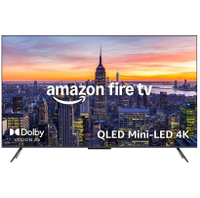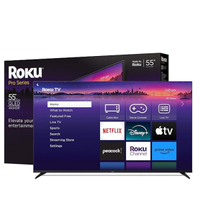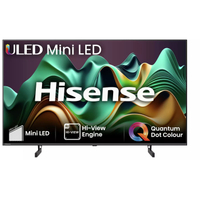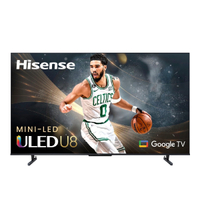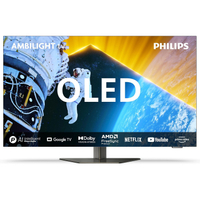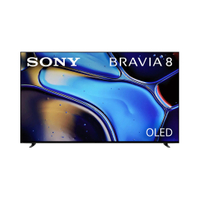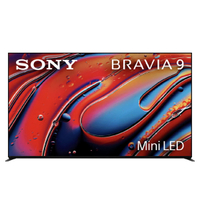The best 65-inch TV 2025 for every budget, all tested by our reviewers
The best 65-inch 4K TVs for big-screen action
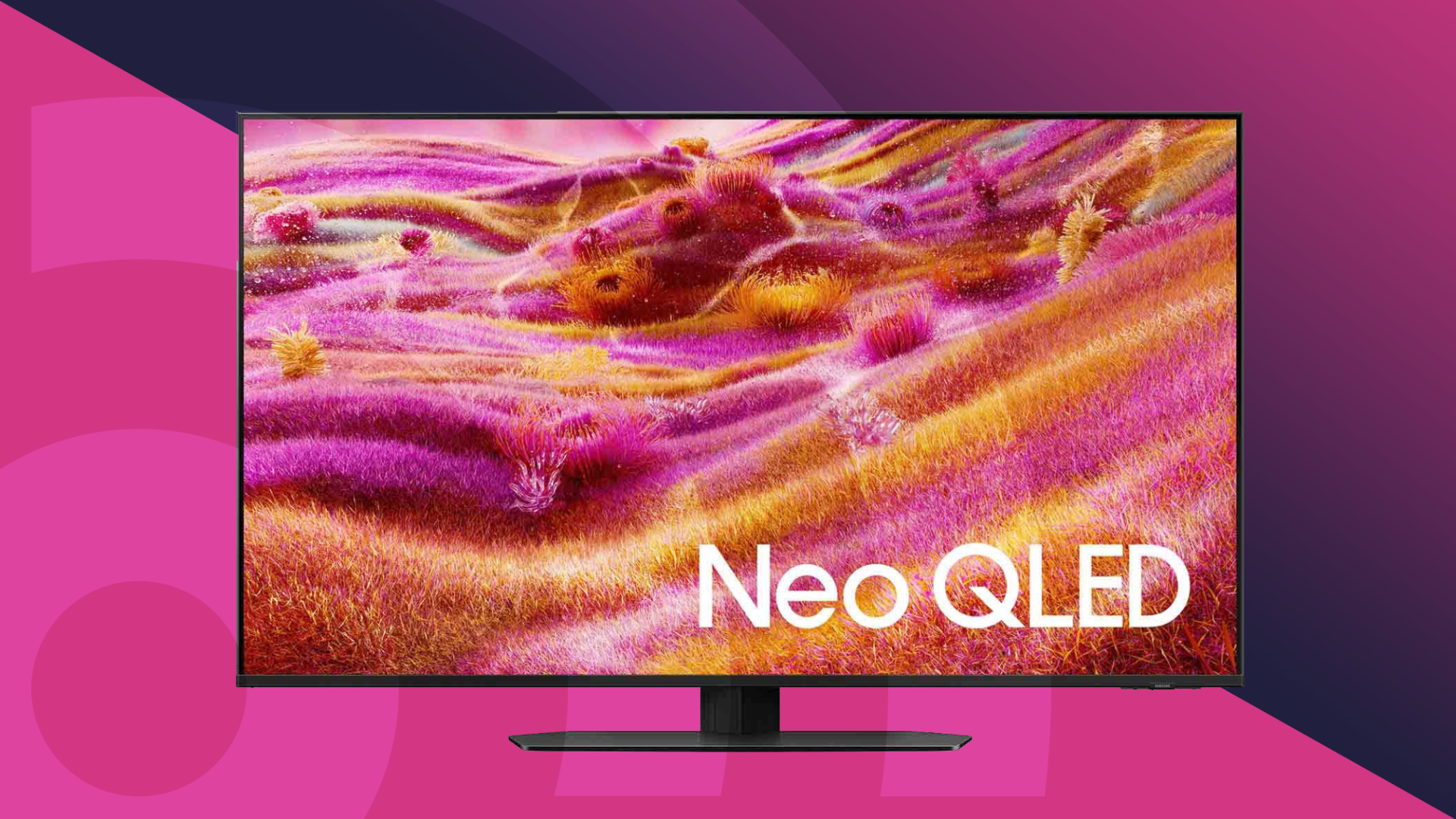
The best 65-inch TVs are the ideal way to get fully immersed in movies and games. They've become so much more affordable in the last few years, which means you can get some seriously high-quality screen tech for very reasonable prices.
Of course, any list of the best 65-inch TVs will also include some money-no-object sets – some of the best OLED TVs with next-gen tech or best 8K TVs are available at this size – but you might be surprised by how little difference there is between these and the price of the best 55-inch TVs in many cases.
When we test 65-inch TVs, we take objective readings of elements such as their color accuracy and brightness levels, and combine those with our subjective opinion and experience of how natural the detail is and how realistic their motion processing looks to evaluate the whole image quality. We know what to expect from the best TVs at all kinds of price levels because we've tested so many, so we balance performance against cost and features to arrive at the list below.
The quick list
Want to cut to the chase and find out which 65-inch TVs are the best? Below, you’ll find a roundup of our choices. You can also jump to a more detailed review of every pick and our price comparison tool to help you find the best deals.
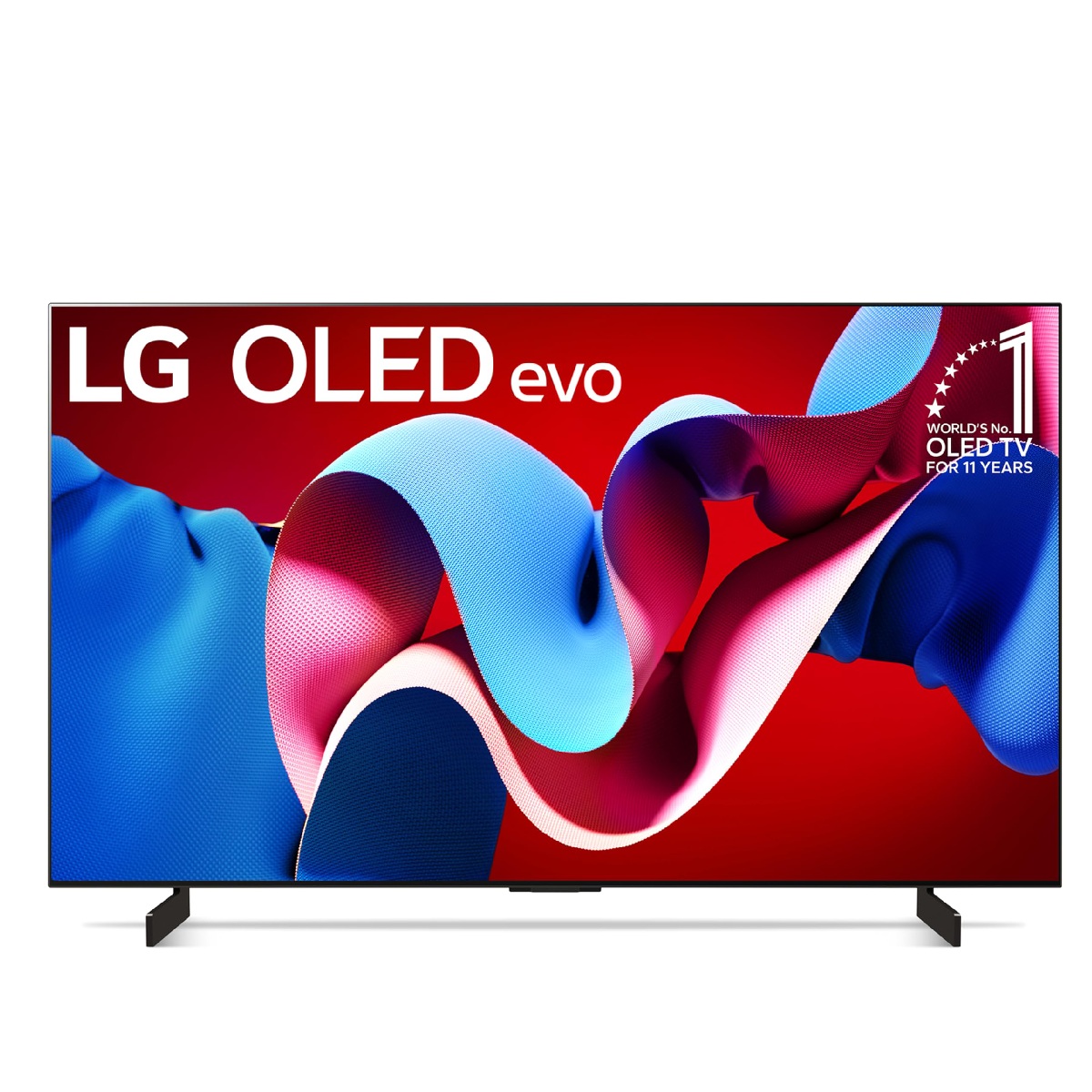
The best 65-inch TV for most people
Looking for the ultimate, versatile TV? The LG C4 delivers superb picture quality and a full stock of gaming and smart features that covers all the bases.
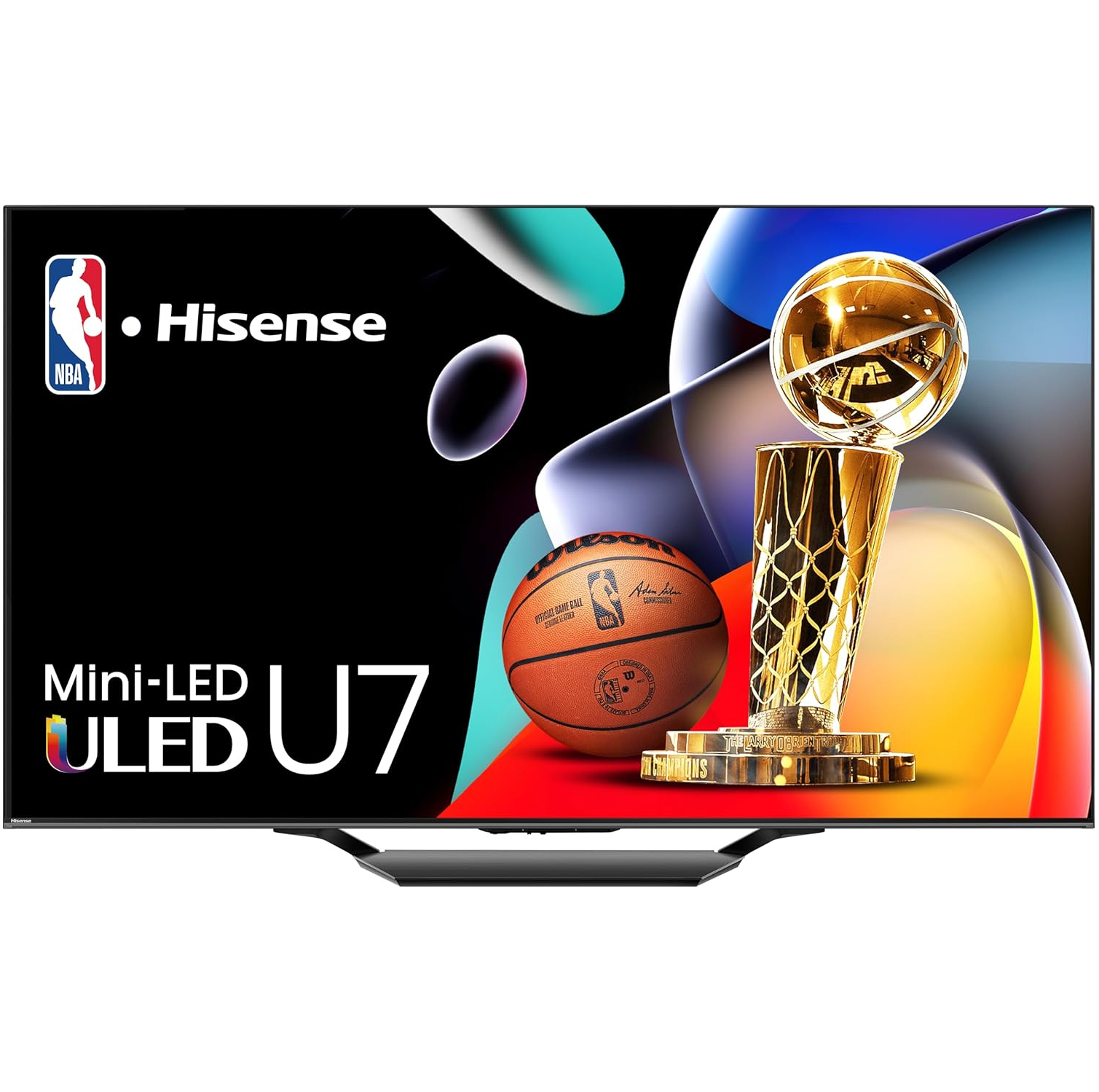
The best budget 65-inch TV in the US
The Hisense U7N mini-LED TV has strong picture quality and comes with stacks of smart and gaming features – all for an extremely competitive price.
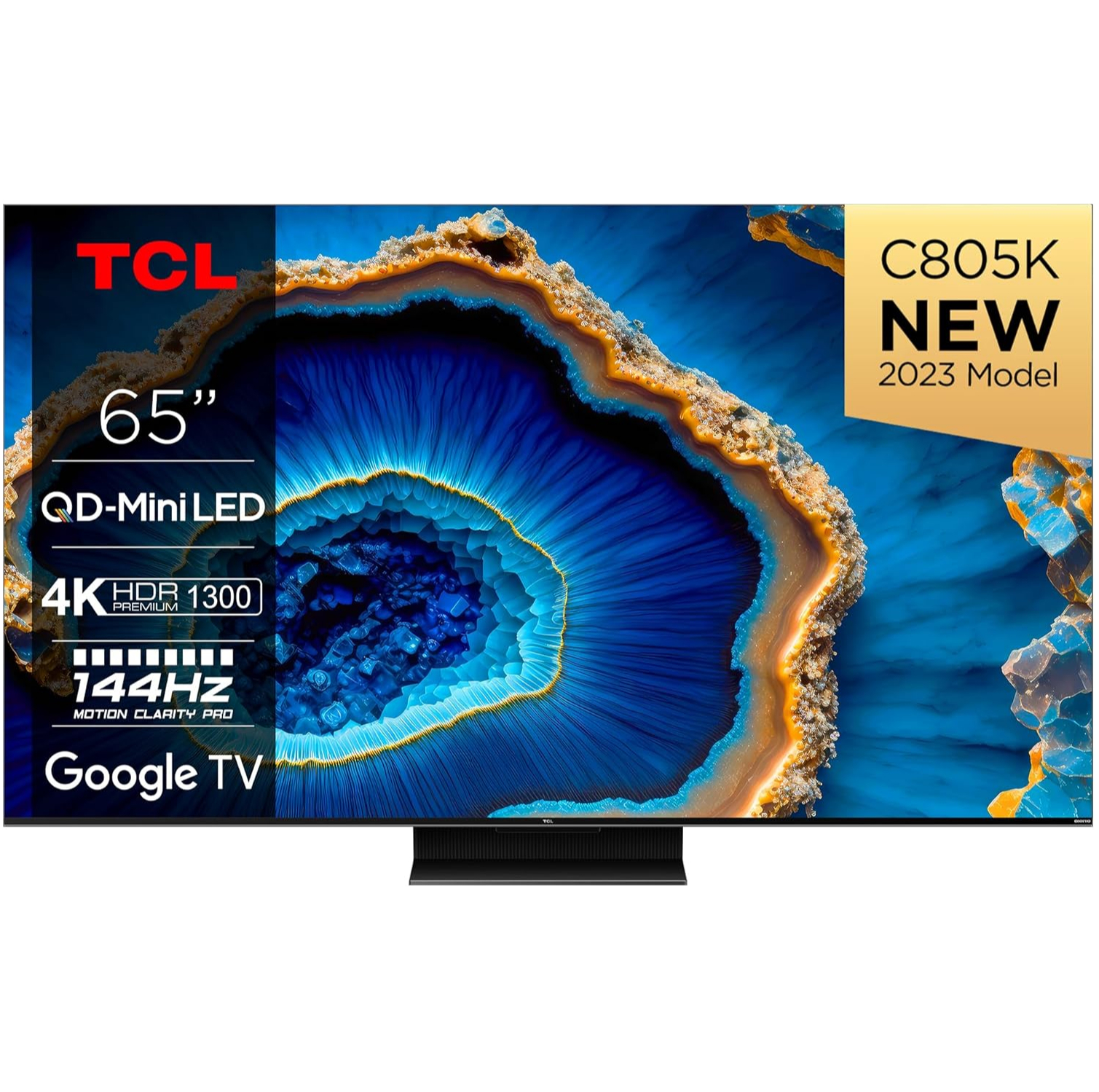
Best budget 65-inch TV in the UK
The TCL C805 offers mini-LED picture quality and a good stock of gaming features at a very budget-friendly price for a 65-inch TV, but isn't available in the US.
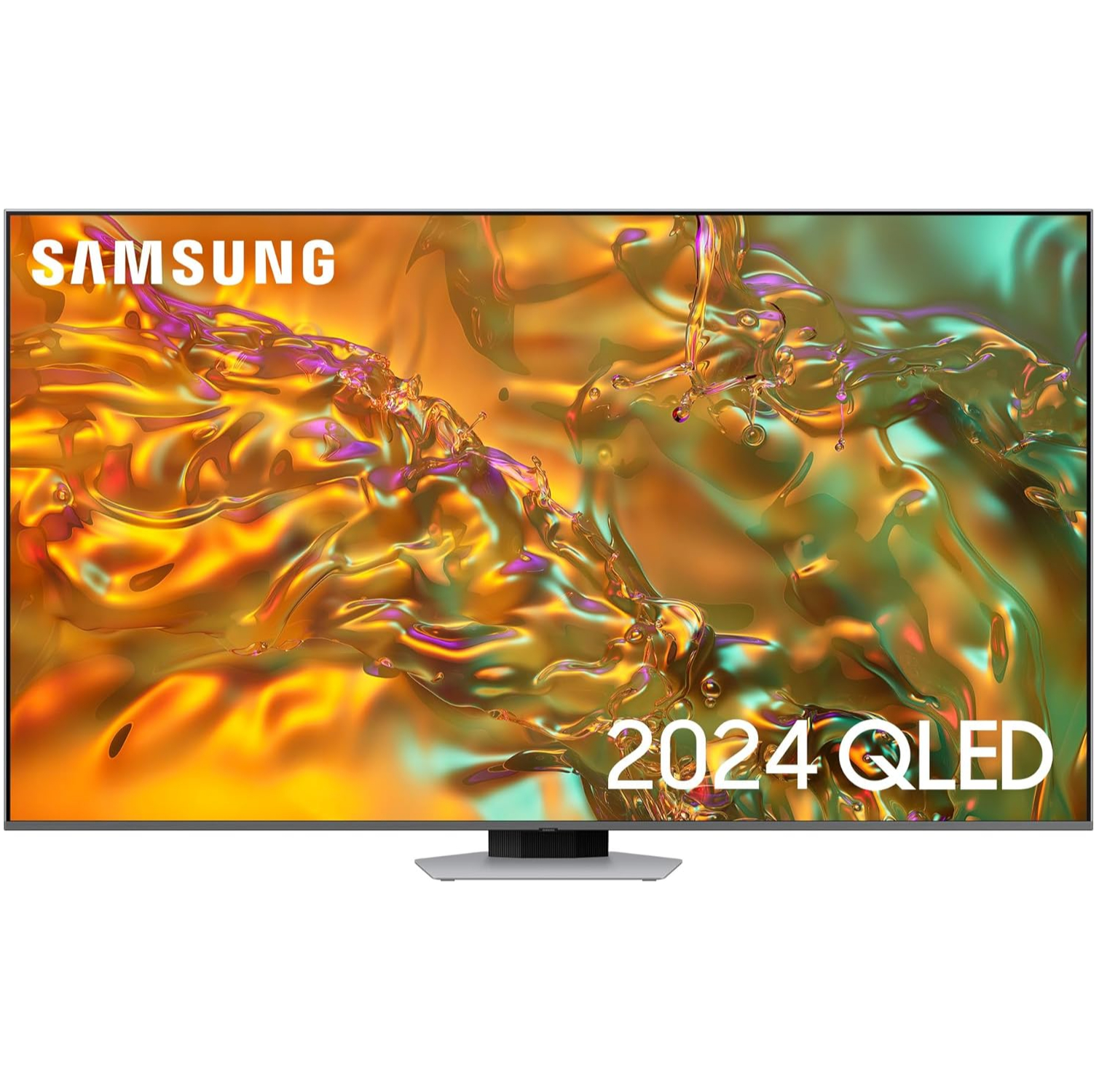
The best 65-inch TV at a mid-range price
With a surprisingly detailed and contrast-rich picture and an extensive list of gaming features (including 4x HDMI 2.1 ports), the Samsung Q80D is an excellent mid-range TV.
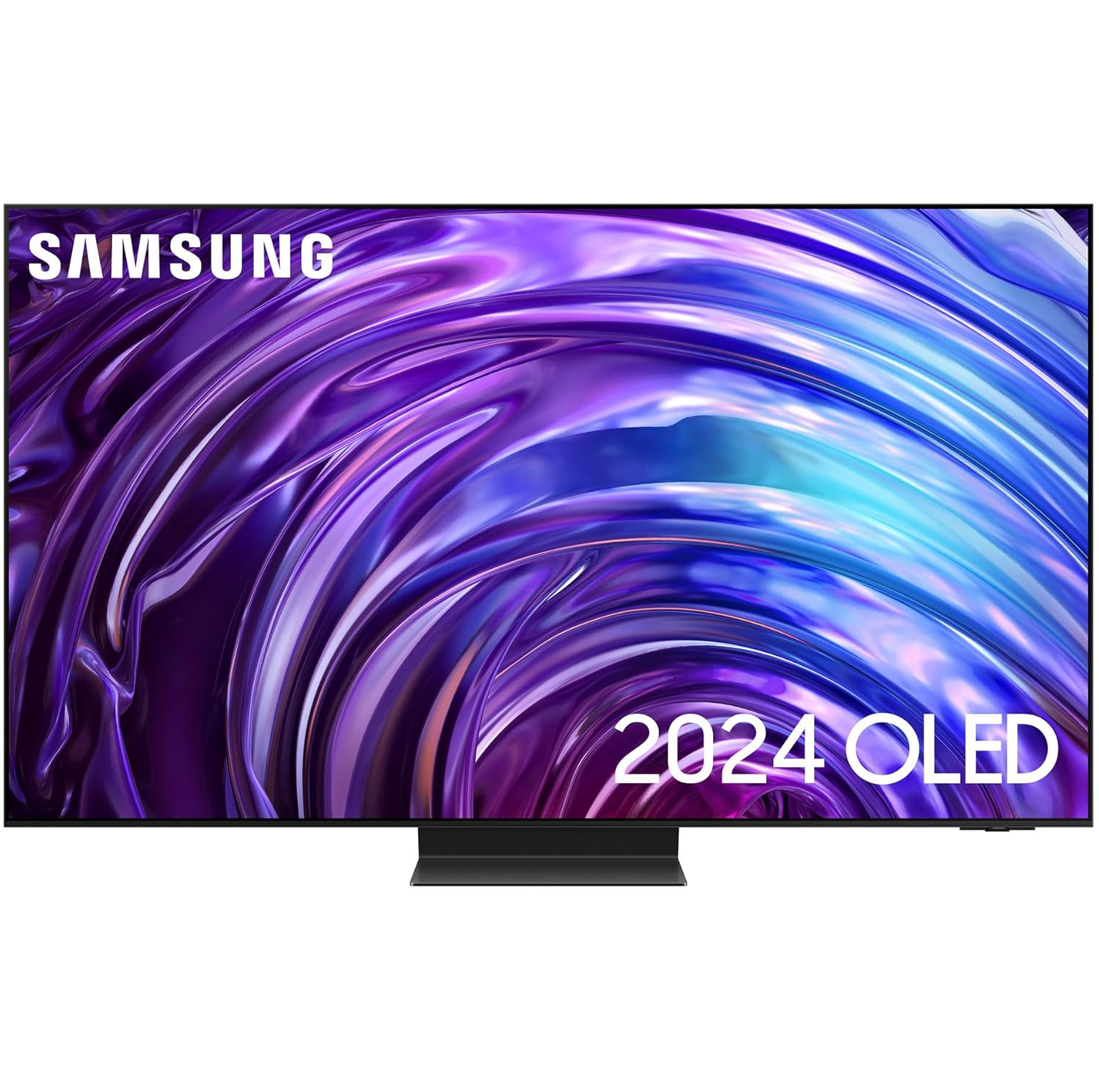
The best 65-inch premium OLED TV
QD-OLED and custom anti-reflection tech combine to create a superb picture in all conditions, plus tons of smart and gaming features and a stunning design – but it's expensive.
Read more below

The best 65-inch OLED TV for sound
The Panasonic Z95A's built-in 5.1.2-channel speaker system delivers powerful, immersive sound. Most viewers will find it good enough that they won't need a separate soundbar.
Load the next products...
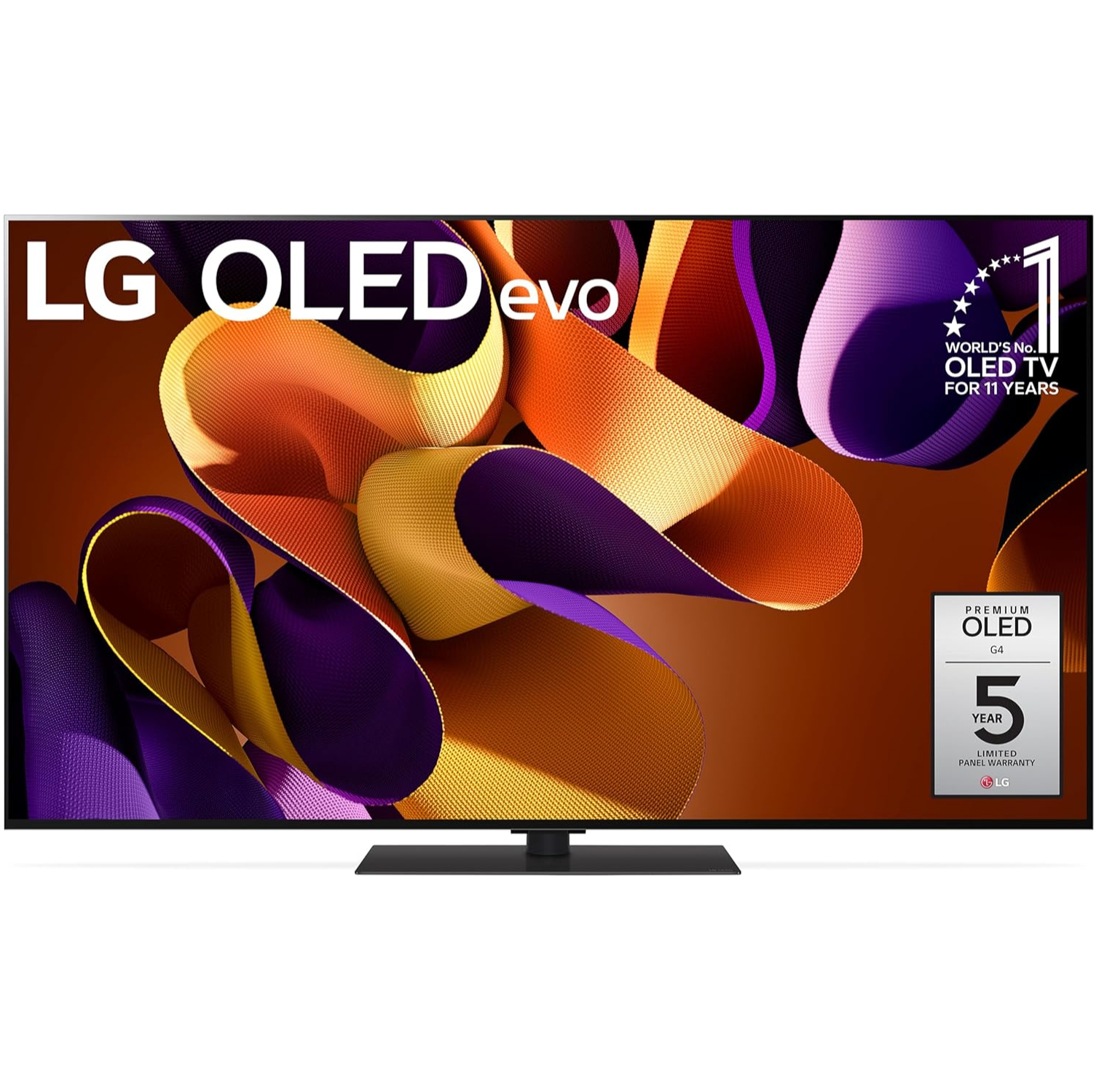
The best 65-inch OLED TV for wall-mounting
With a sleek, attractive design and delightfully thin depth, the LG G4 is the ideal TV to go on the wall, and even comes with its own 'zero-gap' wall-mount for a sleeker look.
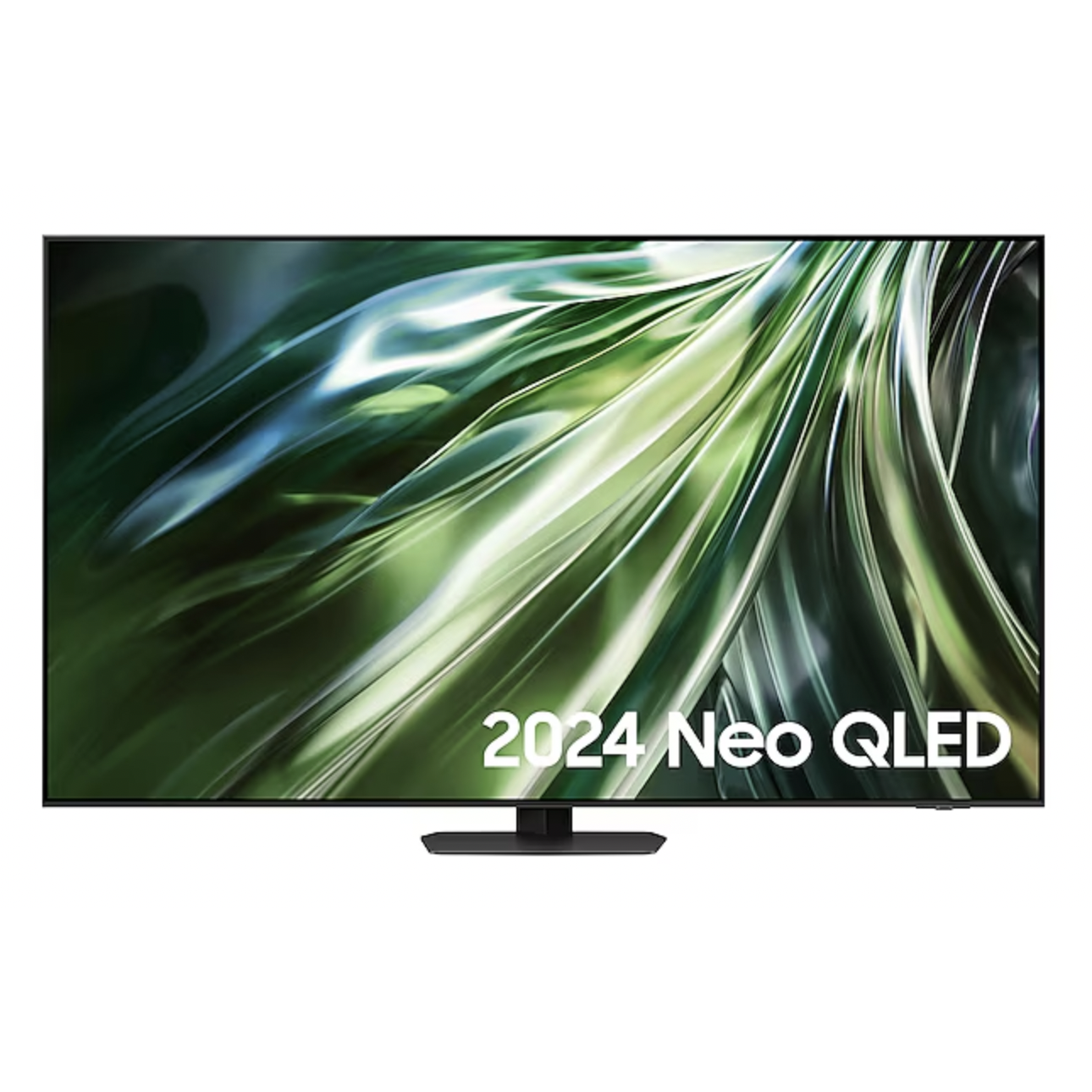
The best 65-inch TV for sports
This Samsung mini-LED TV combines high brightness, great viewing angles, and great motion handling for optimal daytime sports viewing. With four HDMI 2.1 ports, it's also superb for gaming.

I'm TechRadar's TV Hardware Staff Writer, and I've reviewed everything from budget TVs to cutting-edge OLED tech, and the most common size I test is 65 inches. Before joining TechRadar, I worked for several years at one of the UK's leading AV retailers, on everything up to custom home theater installations.
Recent updates
3 April 2025
Added new Sony and Hisense TV info to 'Coming in 2025' section; added new models to 'Also consider' section.
The best 65-inch TVs 2025
Why you can trust TechRadar
The best 65-inch TV overall
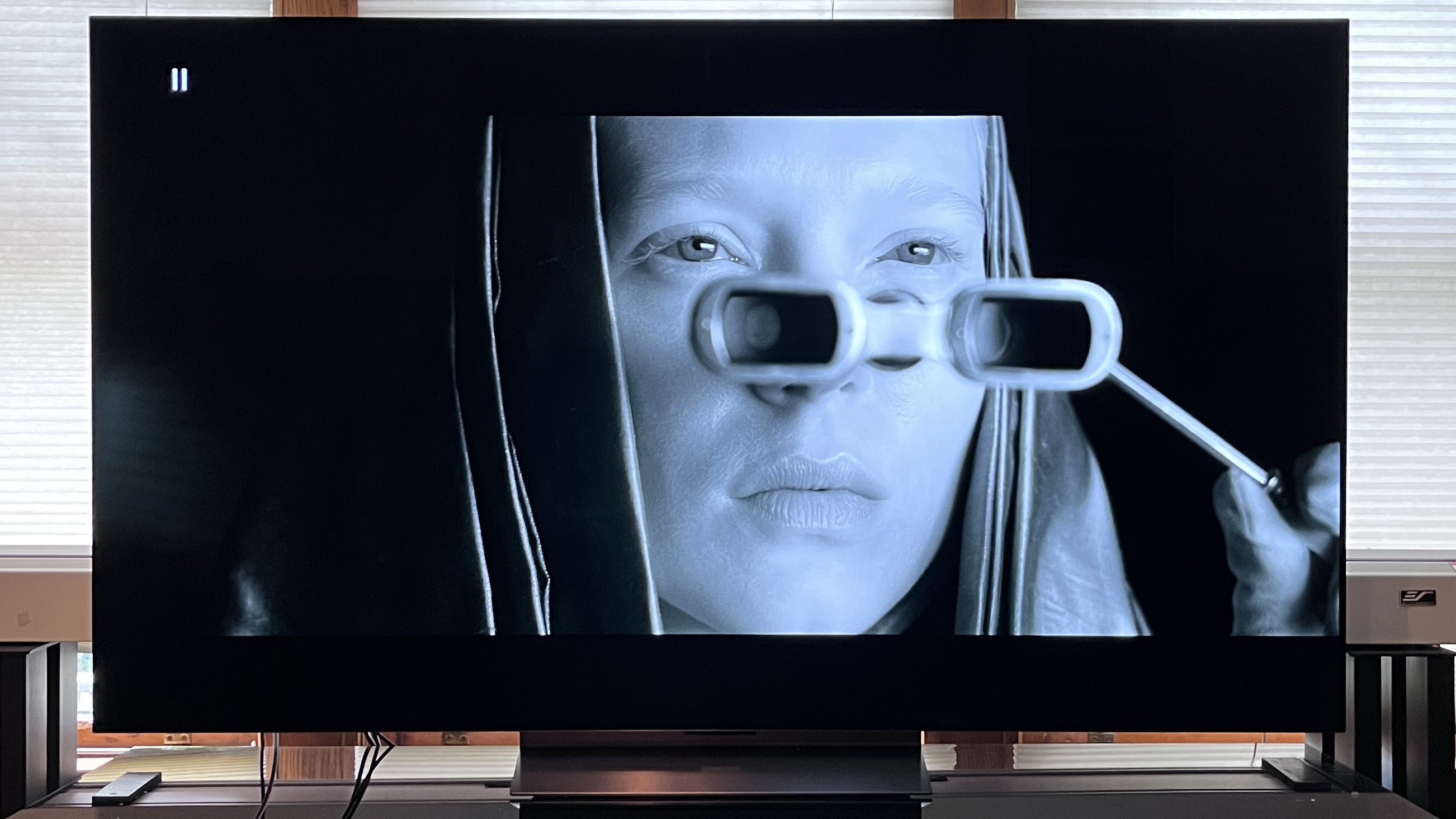
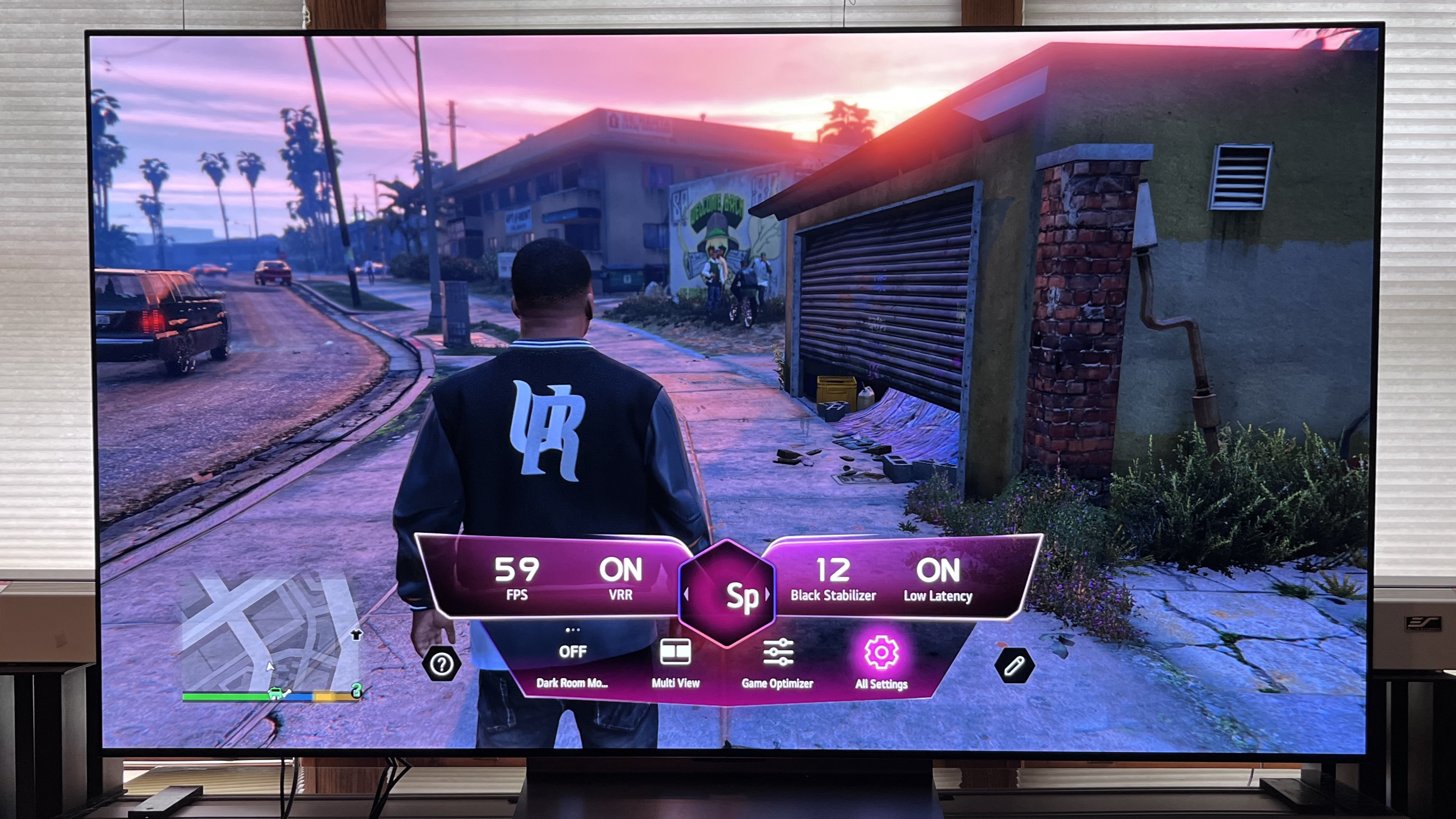
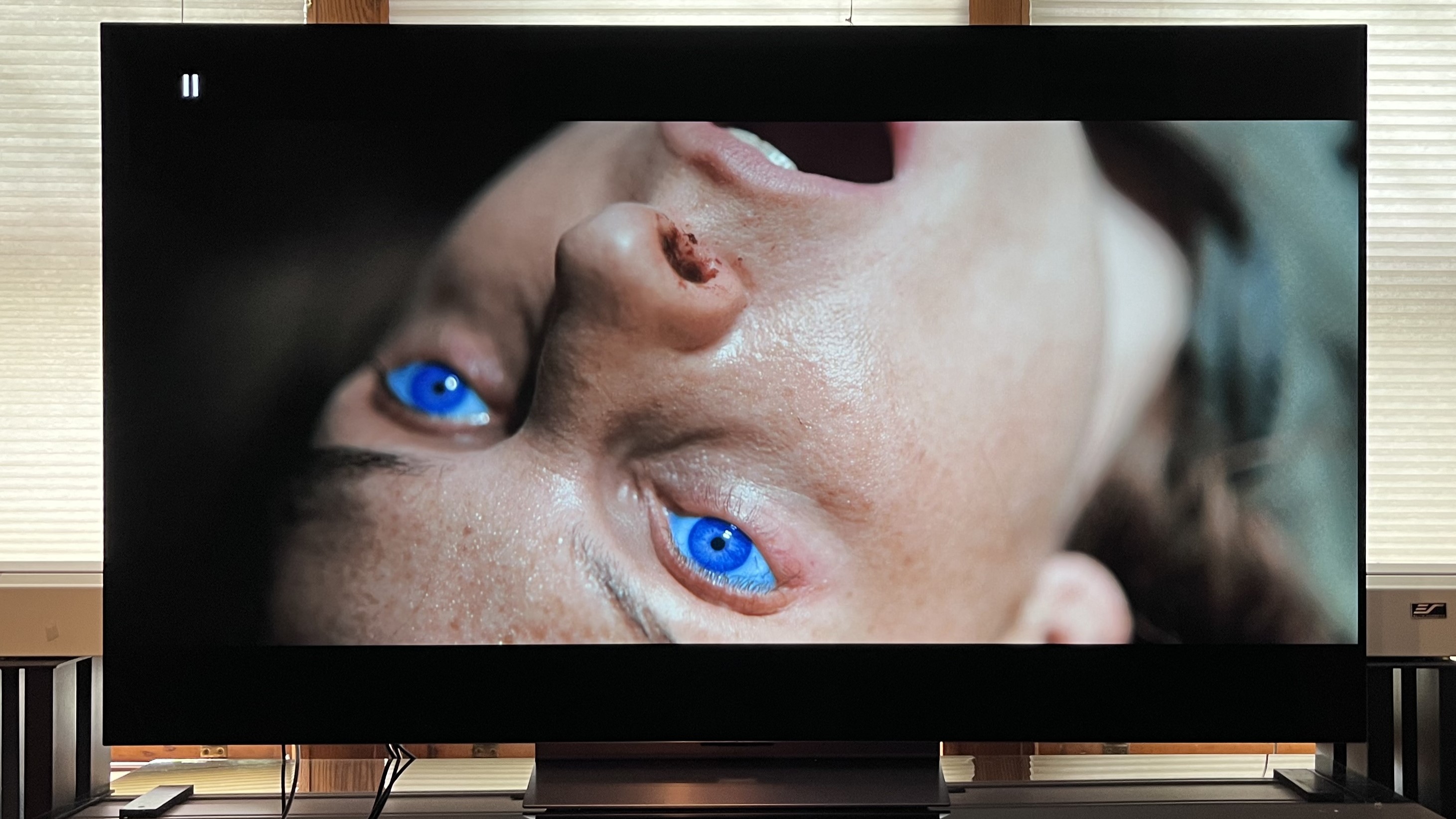
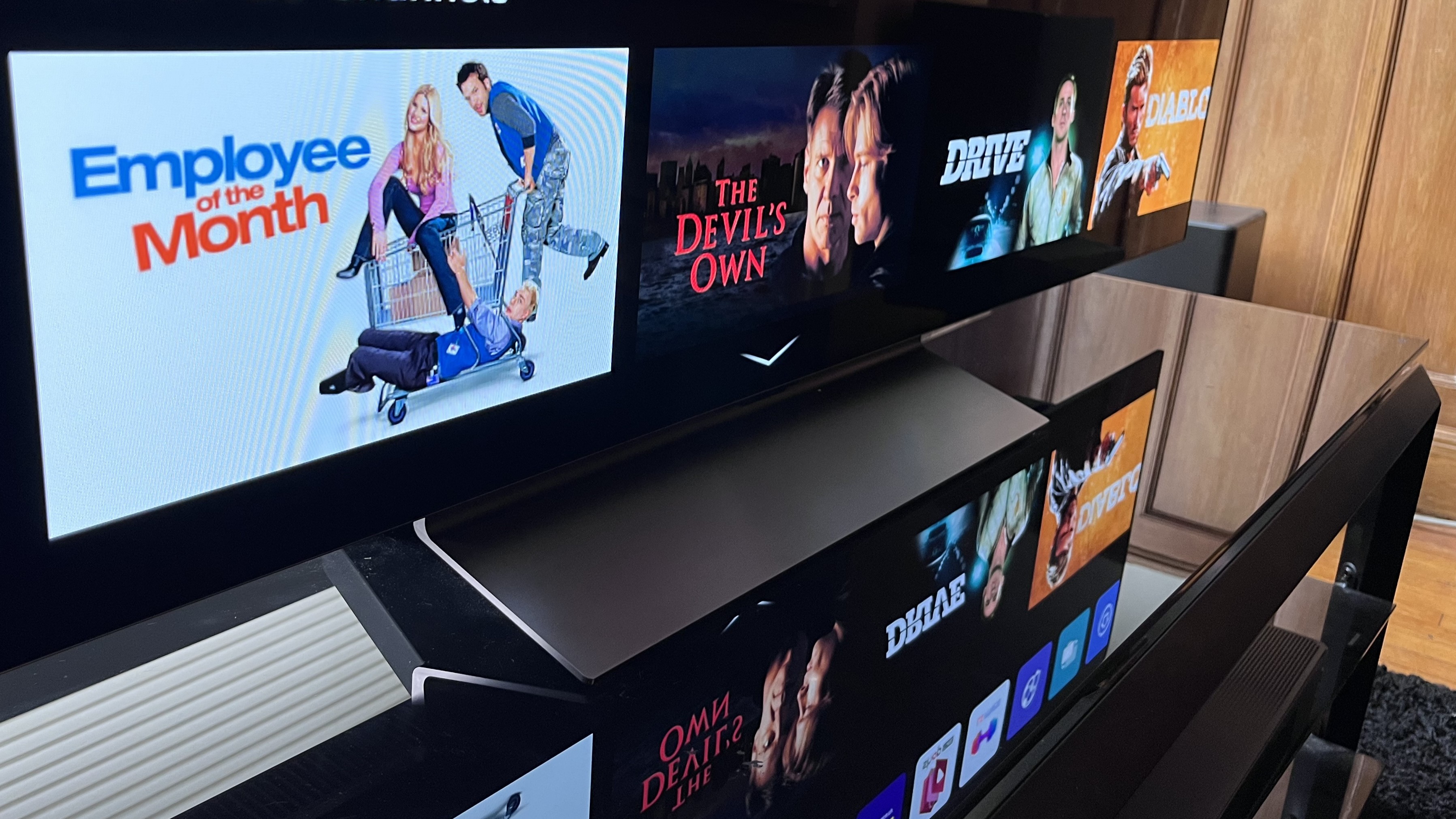
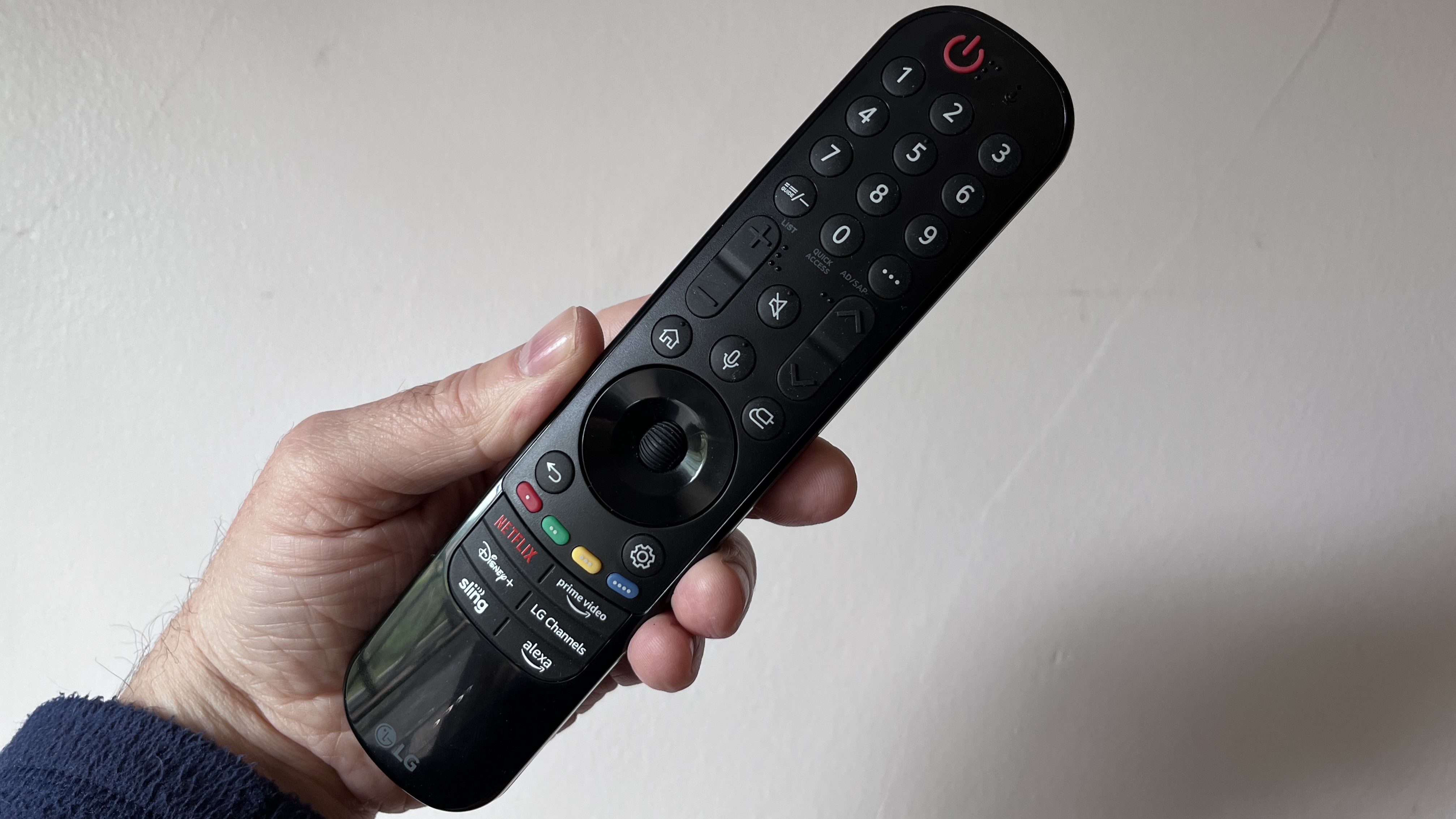
Specifications
Reasons to buy
Reasons to avoid
✅ You want a TV that covers all the bases: The LG C4 is excellent for both gaming and movies, thanks to its superb picture quality and wide range of features
✅ You want a great gaming TV: The C4 is 144Hz certified, and has cloud gaming options and a dynamic picture.
❌ You want the brightest possible TV: The LG C4 is brighter than last year’s C3, but it doesn’t match the LG G4 or the best mini-LED TVs when it comes to brightness.
❌You want the sound to match the picture: While the C4 delivers excellent picture quality, its built-in sound is average – a soundbar may be required for some.
The LG C-series has proven to be the jack-of-all-trades of the OLED TV world for years, and the LG C4 is no different. Whether it's movies, gaming, or sports, the C4 really does cover all the bases, delivering amazing picture quality, a full suite of gaming features, and a competitive price compared to rival OLEDs.
The LG C4's picture quality is nothing short of fantastic. Our review praised the C4's excellent contrast and refined details, saying anything that posed challenges to the C4's processor, such as Dune: Part Two, "passed with flying colors." The C4 also demonstrated brilliant HDR highlights, vibrant colors, and a pleasing level of brightness.
The C4 is a brilliant gaming TV. Its four HDMI 2.1 ports support 4K 144Hz, VRR (AMD FreeSync and Nvidia G-Sync included), Dolby Vision gaming and ALLM. It also delivers an ultra-low 9.2ms input lag (with Boost mode in Game Optimizer activated) for ultra-responsive, smooth gaming.
While the C4 does have setbacks such as average built-in sound quality, it's still exceptional in many areas compared with its mid-range OLED rivals and is also the most competitively priced. For those looking for the best 65-inch TV, you can't go wrong with the LG C4.
Read our full LG C4 TV review
Find the best deals on LG products with our LG coupon codes.
The best budget 65-inch TV in the US
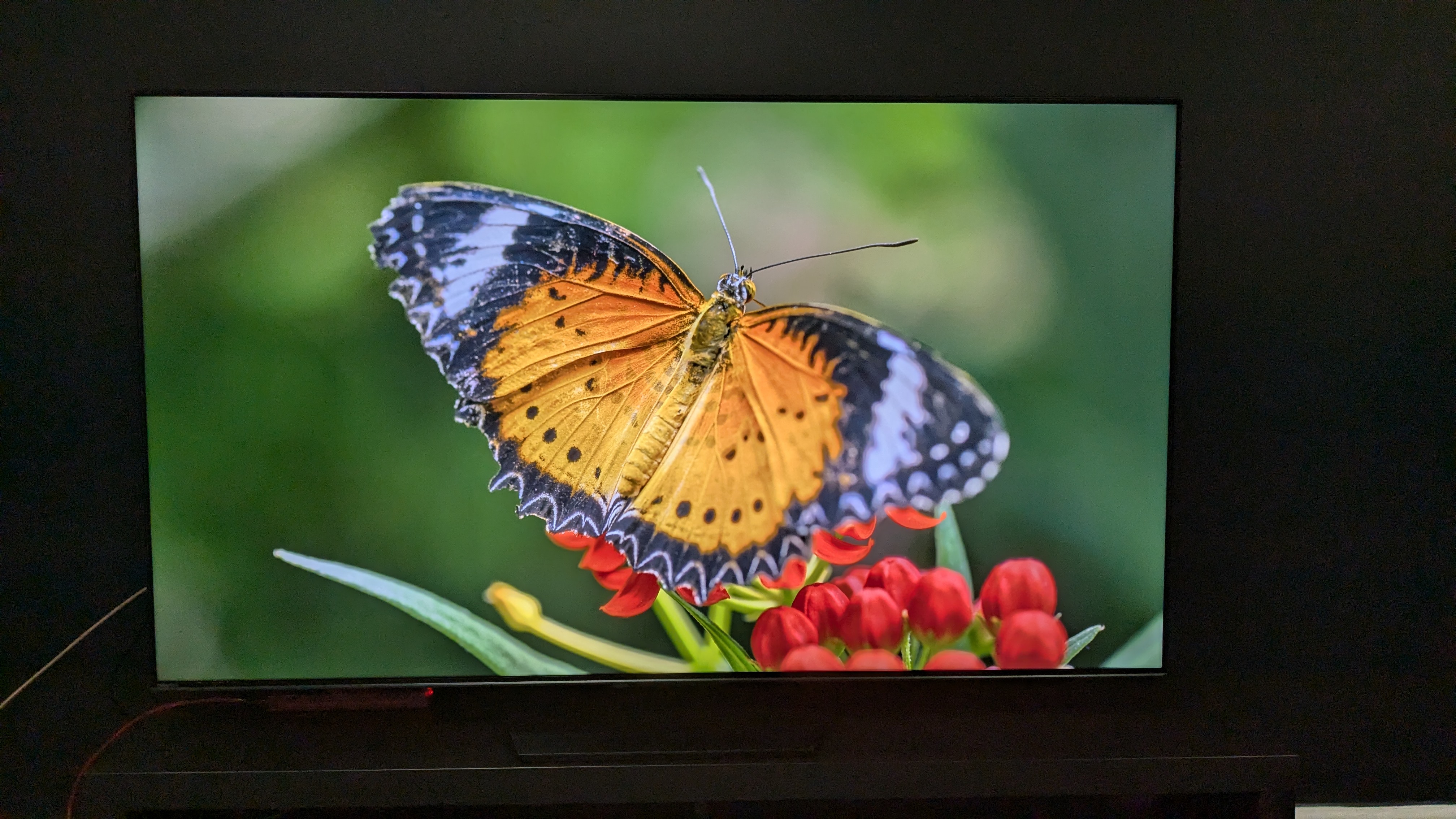
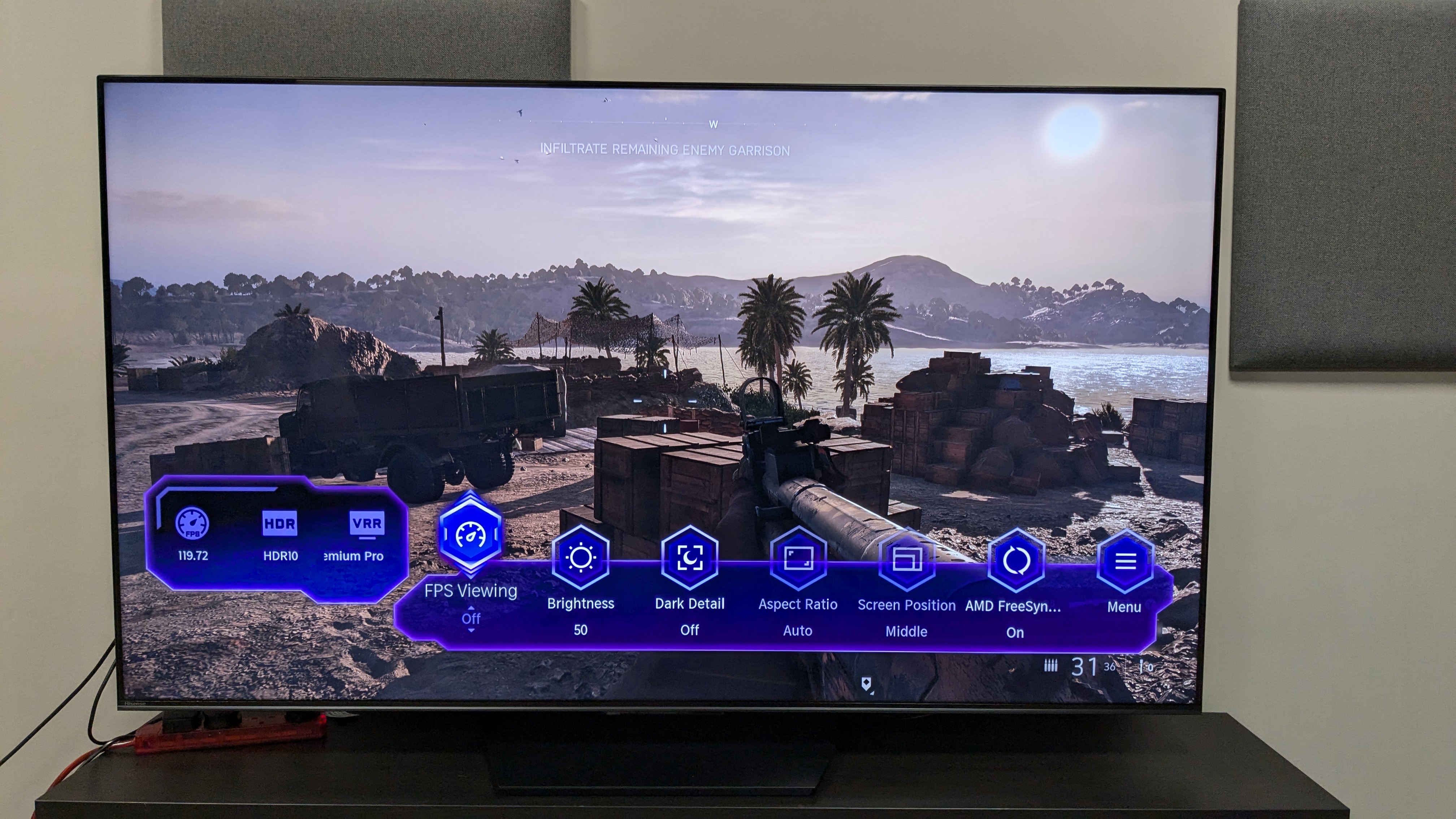
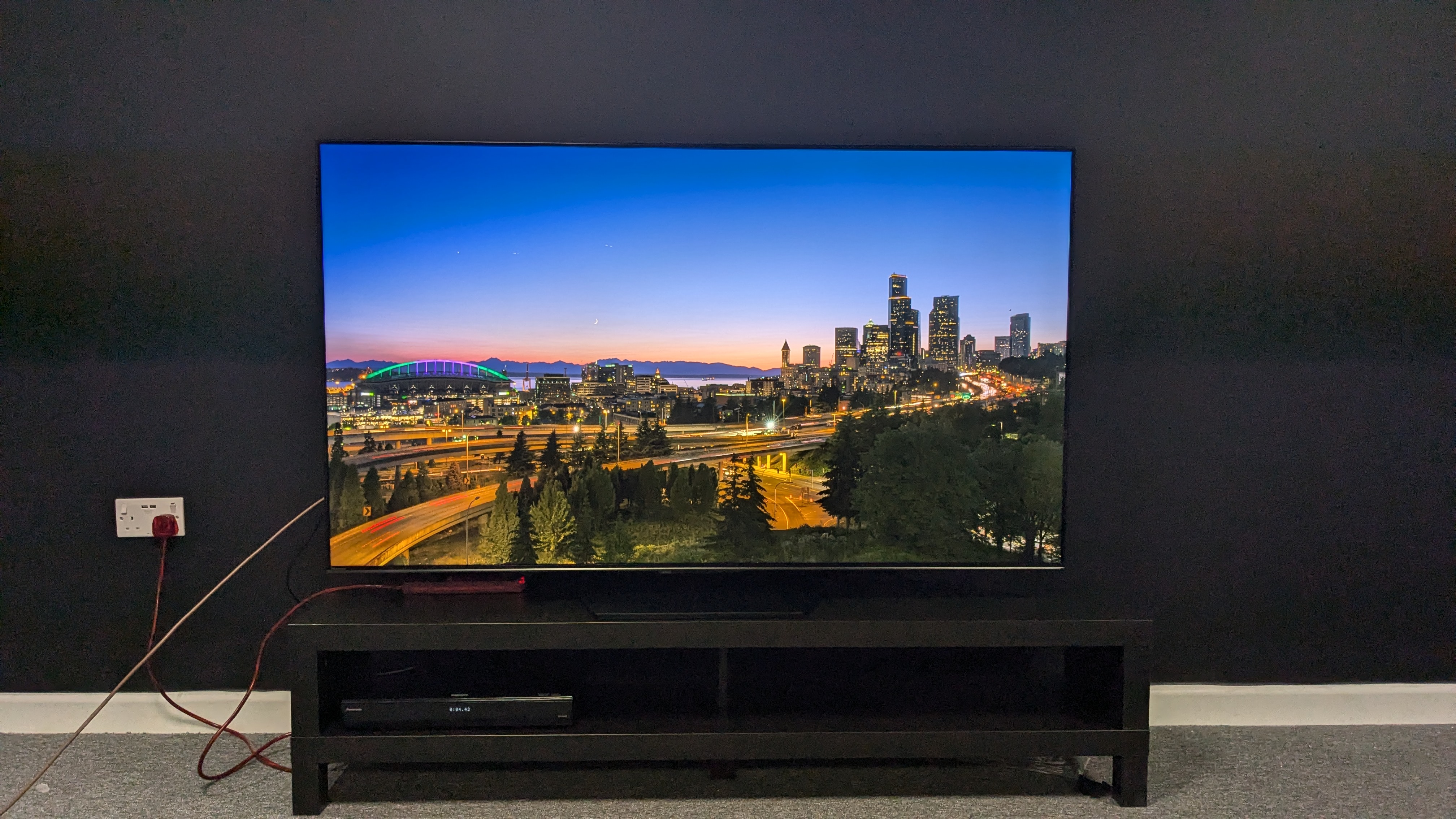
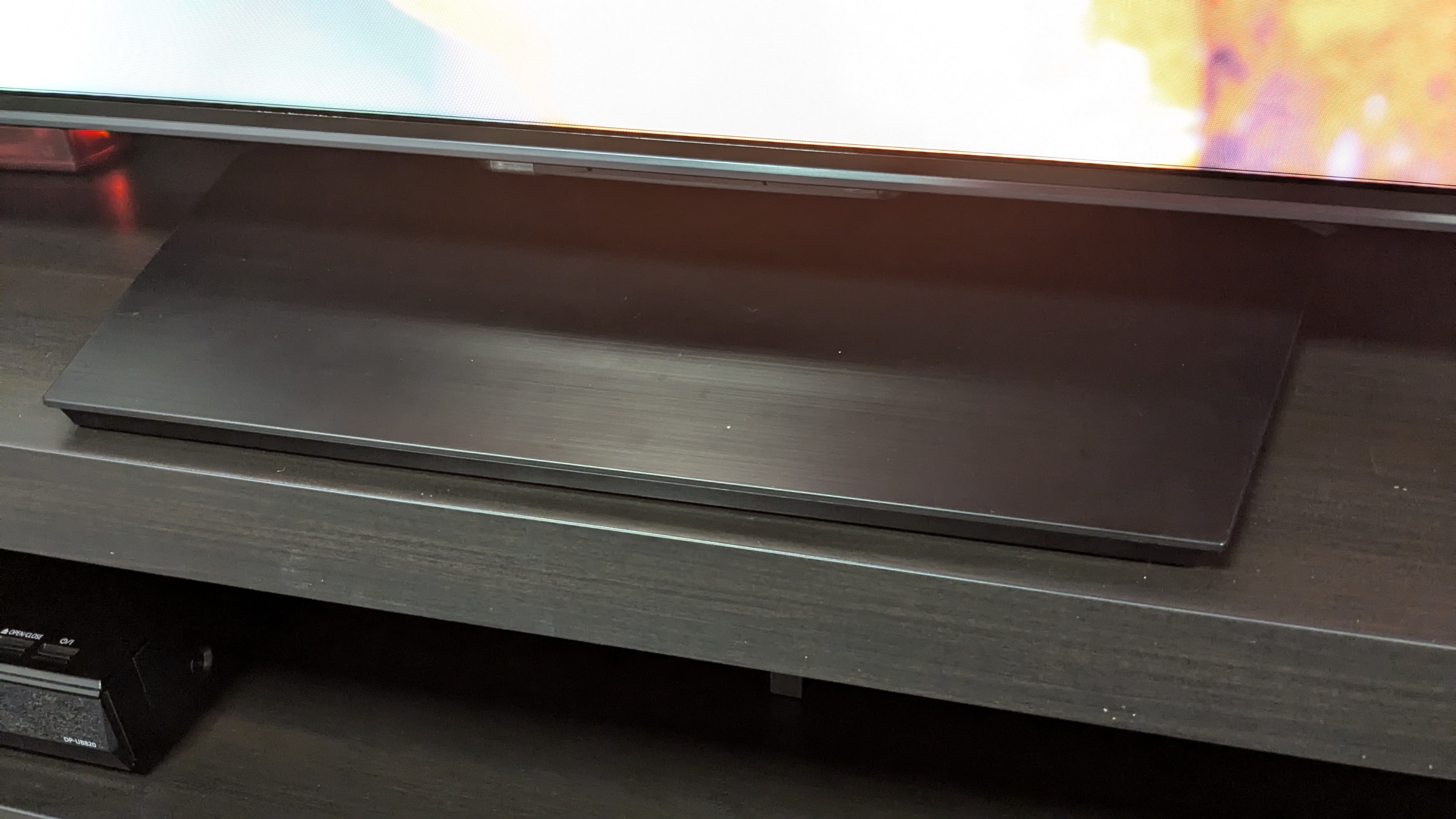
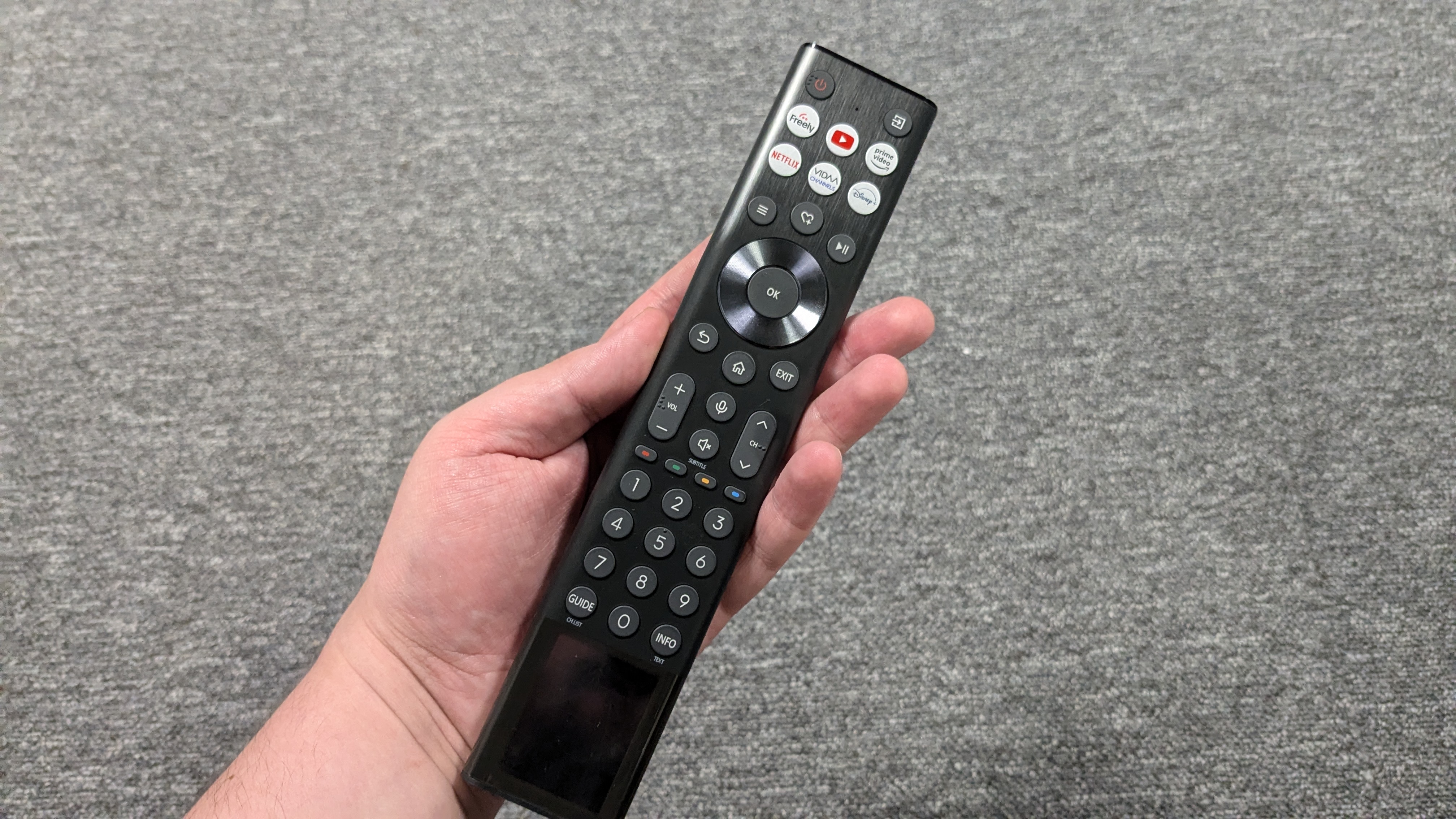
Specifications
Reasons to buy
Reasons to avoid
✅ You want outstanding value: Dynamic pictures, great gaming performance and features, and Google TV – the U7N delivers it all and also saves you money.
✅ You want a well-equipped gaming TV: The U7N carries up to 144Hz refresh rate, Dolby Vision gaming and VRR – features typically found on pricier sets.
❌ You'll be watching in large groups: The U7N's picture fades when viewed from off-center, with reduced contrast and more obvious backlight blooming.
❌You don't want to adjust settings: While the U7N's picture presets are adequate, it requires experimentation to get the most accurate images.
The Hisense U7N easily delivers some of the best bang for your buck in a 65-inch screen size, providing great quality images on a budget, a suite of useful gaming features, the Google TV smart TV platform and more – all for under $900.
Dynamic, bright and colorful, the U7N offers excellent picture quality for the money. It thrives with 4K Dolby Vision sources, showing strong details, accurate textures, rich contrast and solid black levels that can compete with some of the best mini-LED TVs – especially for the budget price it is. It's not all perfect as there is some backlight blooming, motion handling can be inconsistent and off-center viewing weakens picture quality, but some of this can be lessened by adjusting picture settings.
Gaming is another highlight for the U7N. It supports up to 144Hz refresh rate, VRR including AMD FreeSync Premium Pro and Nvidia GSync, and Dolby Vision gaming – features that in some cases aren't found on more premium gaming TVs. Couple that with a great all-around picture and performance and the U7N is a real gaming contender.
The Hisense U7N shows its budget design in some places. Its built-in sound lacks the prowess of more premium sets, with unimpressive Dolby Atmos and a limited soundstage, and its picture can be hit-and-miss, but it is tough to argue against just how good value the U7N is.
Read our full Hisense U7N review
The best budget 65-inch TV in the UK
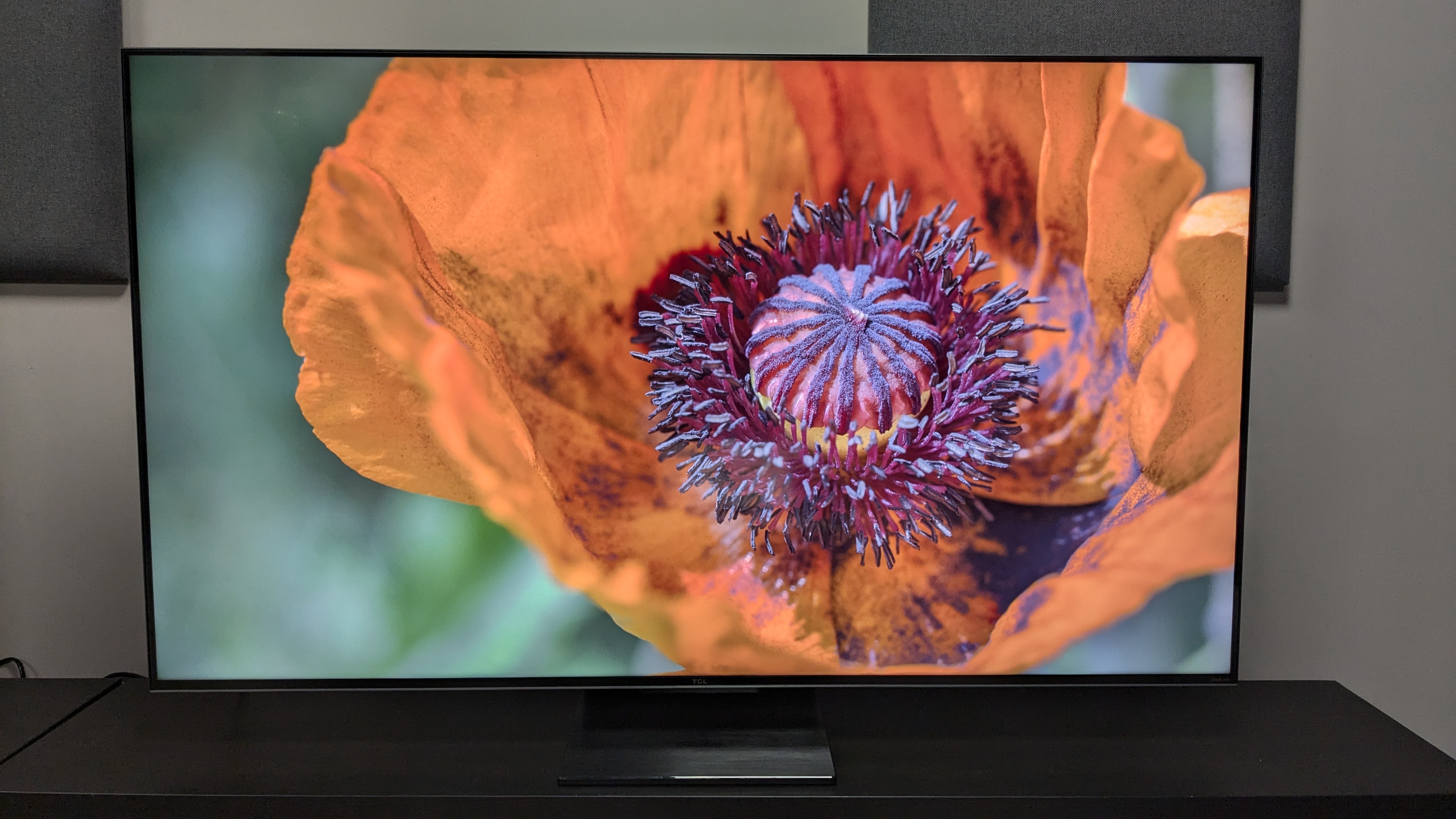
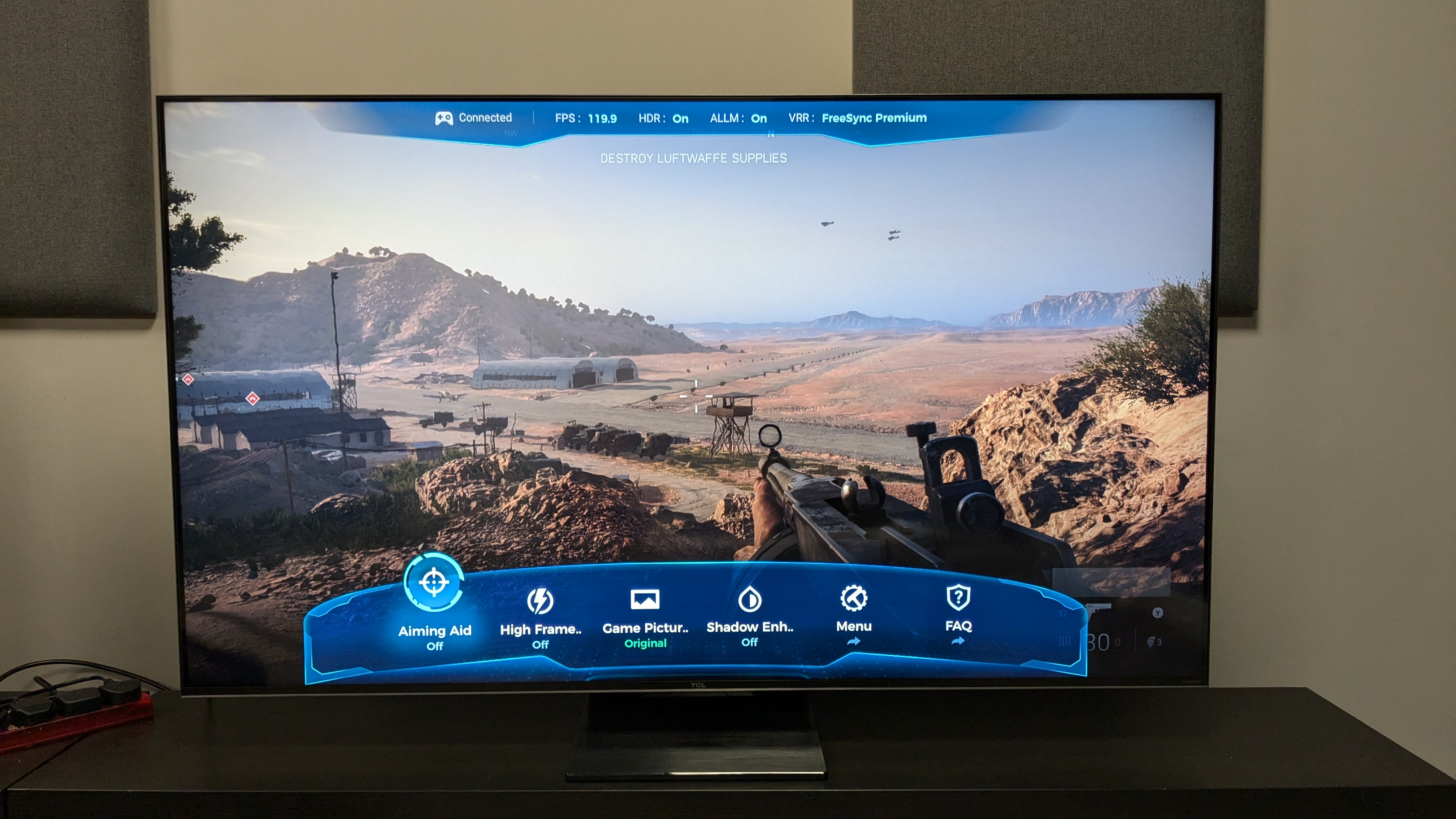
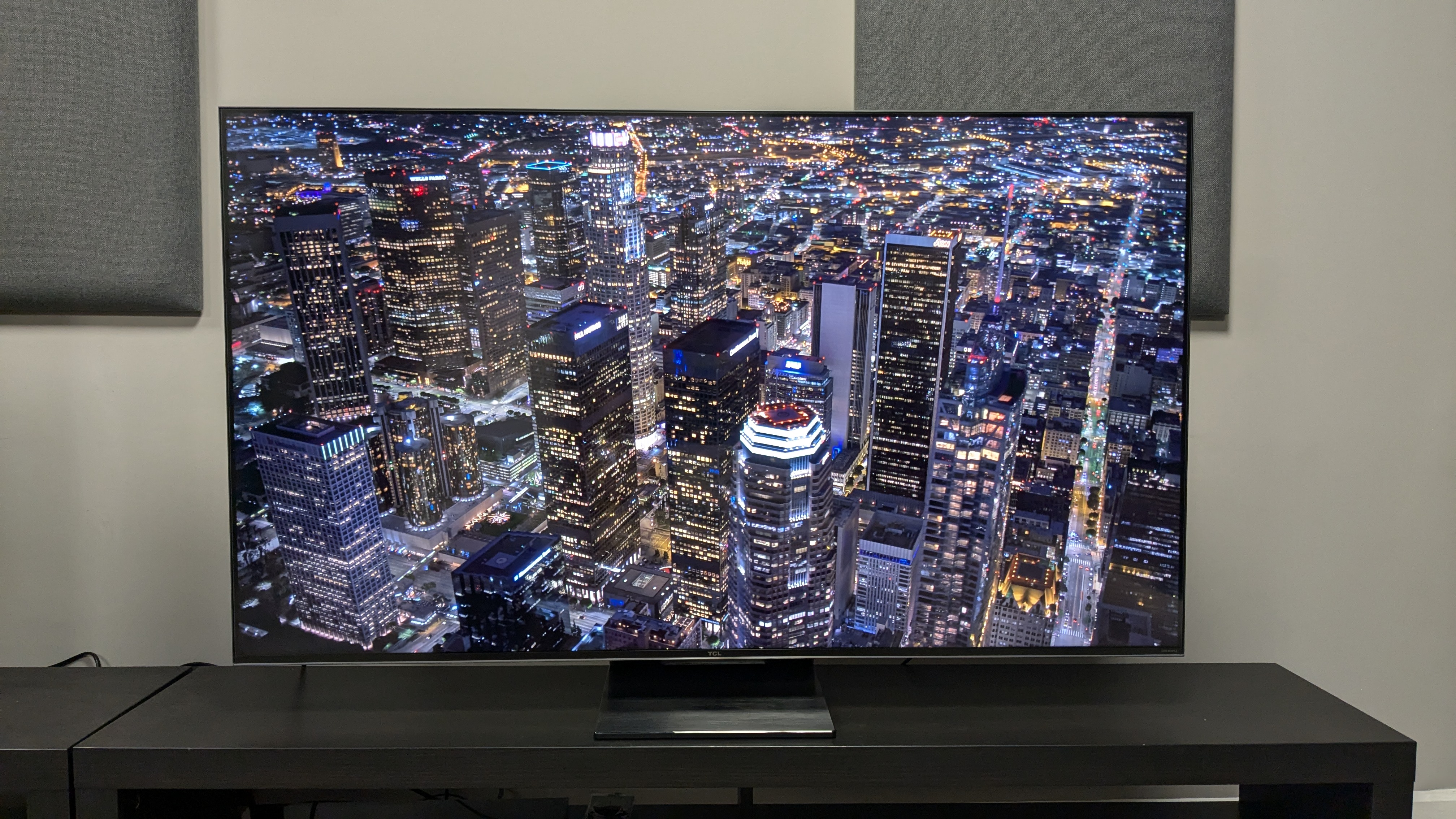

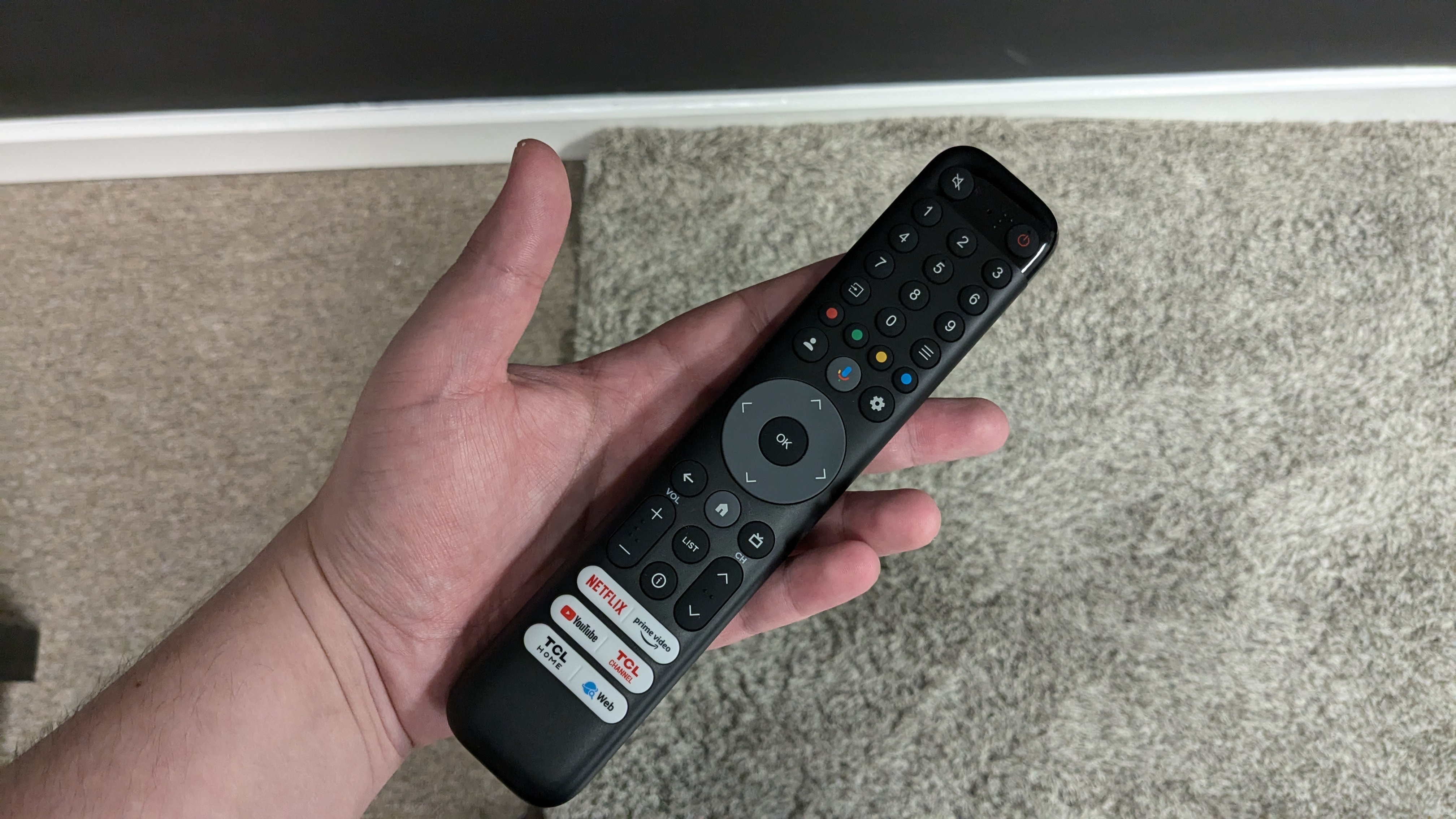
Specifications
Reasons to buy
Reasons to avoid
✅ You want bang for your buck: The C805 delivers good picture quality and extensive gaming features at an excellent price.
✅ You want good picture quality for less: The C805's contrast, black levels and detail are all surprisingly good for a budget mini-LED set.
❌ You need the best built-in sound: The C805 has good bass and clear speech but its soundstage is limited.
❌You need to watch from an angle: The C805 reveals backlight blooming when viewed from an angle, resulting in faded contrast.
The TCL C805 is a mid-range mini-LED TV with a very budget-friendly price. It delivers better-than-expected picture quality and a good list of gaming features and comes with Google TV as its smart TV platform, all for far less than you'd expect to pay for a 65-inch size.
When we reviewed the C805, we were impressed by its contrast and black levels. Going into testing, we expected the budget mini-LED to struggle, but when viewing The Batman, the C805 demonstrated great shadow detail and contrast, with a good balance between light and dark tones. Colors were also suitably punchy and vivid. Although its viewing angles weren't great with some backlight blooming when viewed off-center, and its motion processing required some setup when watching sports, we said in our review that "it's hard to be disappointed with the C805's picture at the price".
Elsewhere, the C805 is stacked for gaming, with 4K 144Hz, VRR (AMD FreeSync Premium Pro supported), ALLM and Dolby Vision gaming all for an affordable price. Performance-wise, the C805 also felt smooth and responsive during gameplay. Although it won't beat the best gaming TVs, if you want a good gaming TV in a 65-inch screen size without breaking the bank, you could do a lot worse than the C805.
While some sacrifices are made with its built-in sound, the C805 is a fantastic overall budget TV option.
Read our full TCL C805 review
The best mid-range 65-inch TV

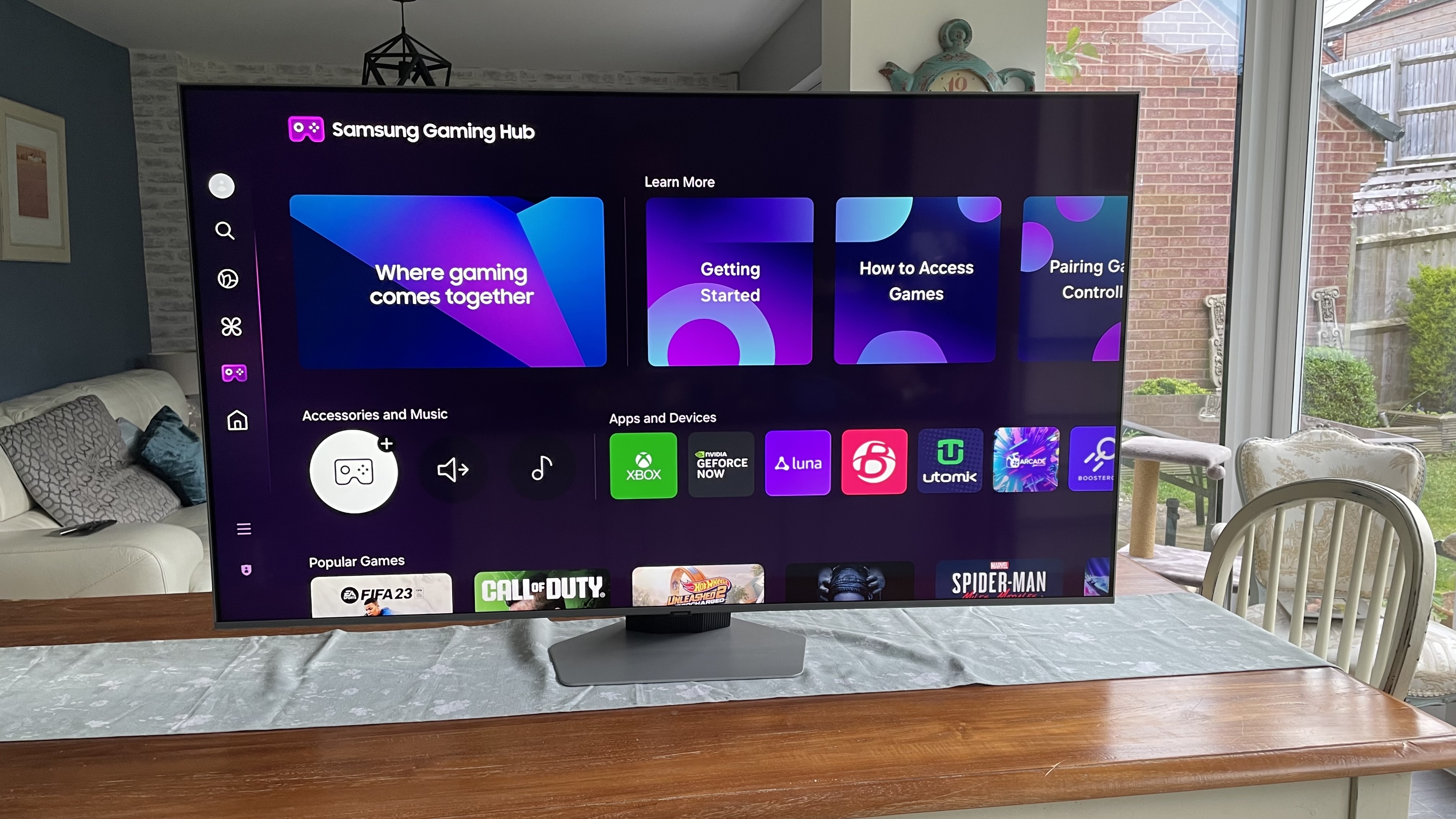
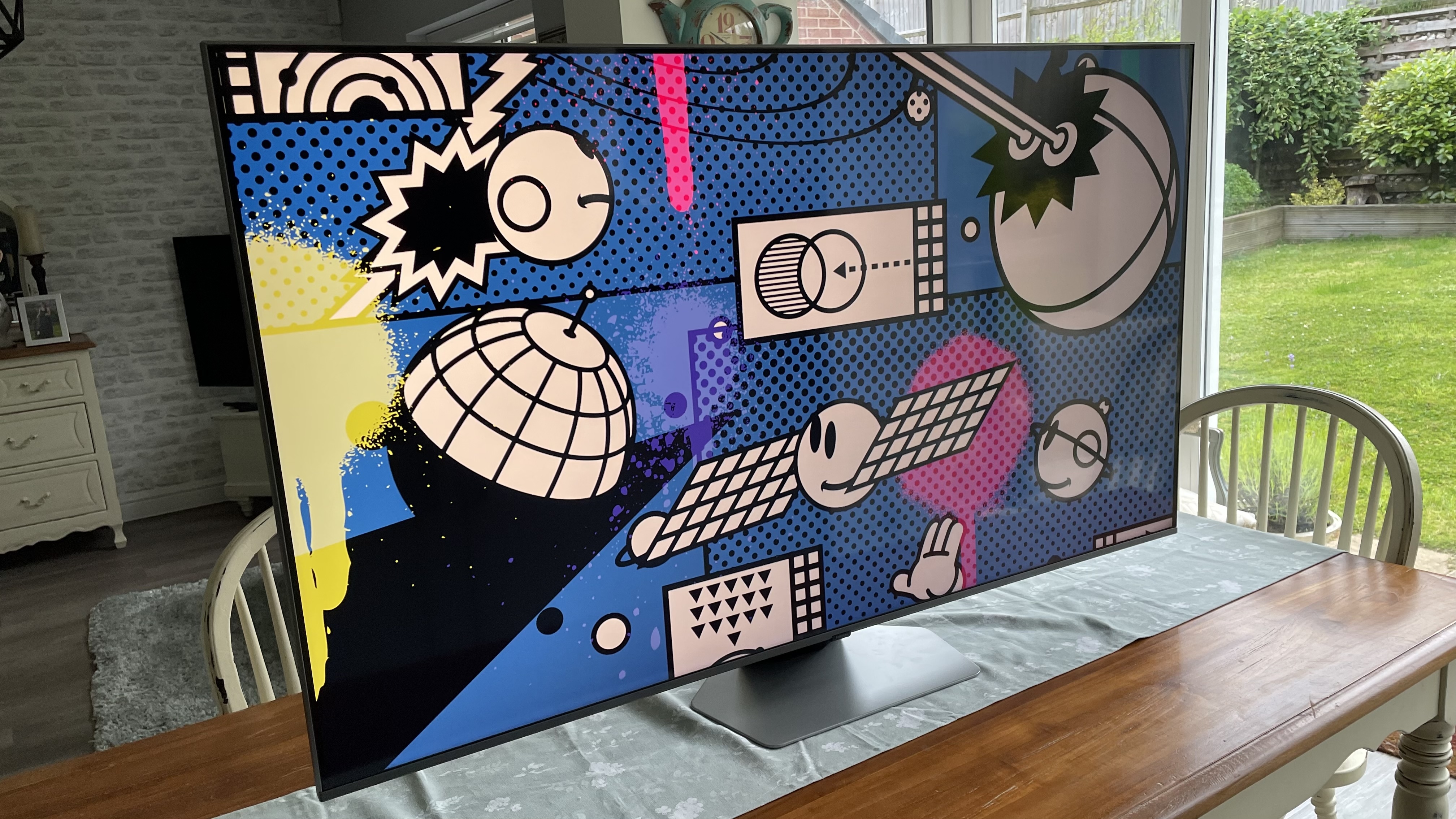
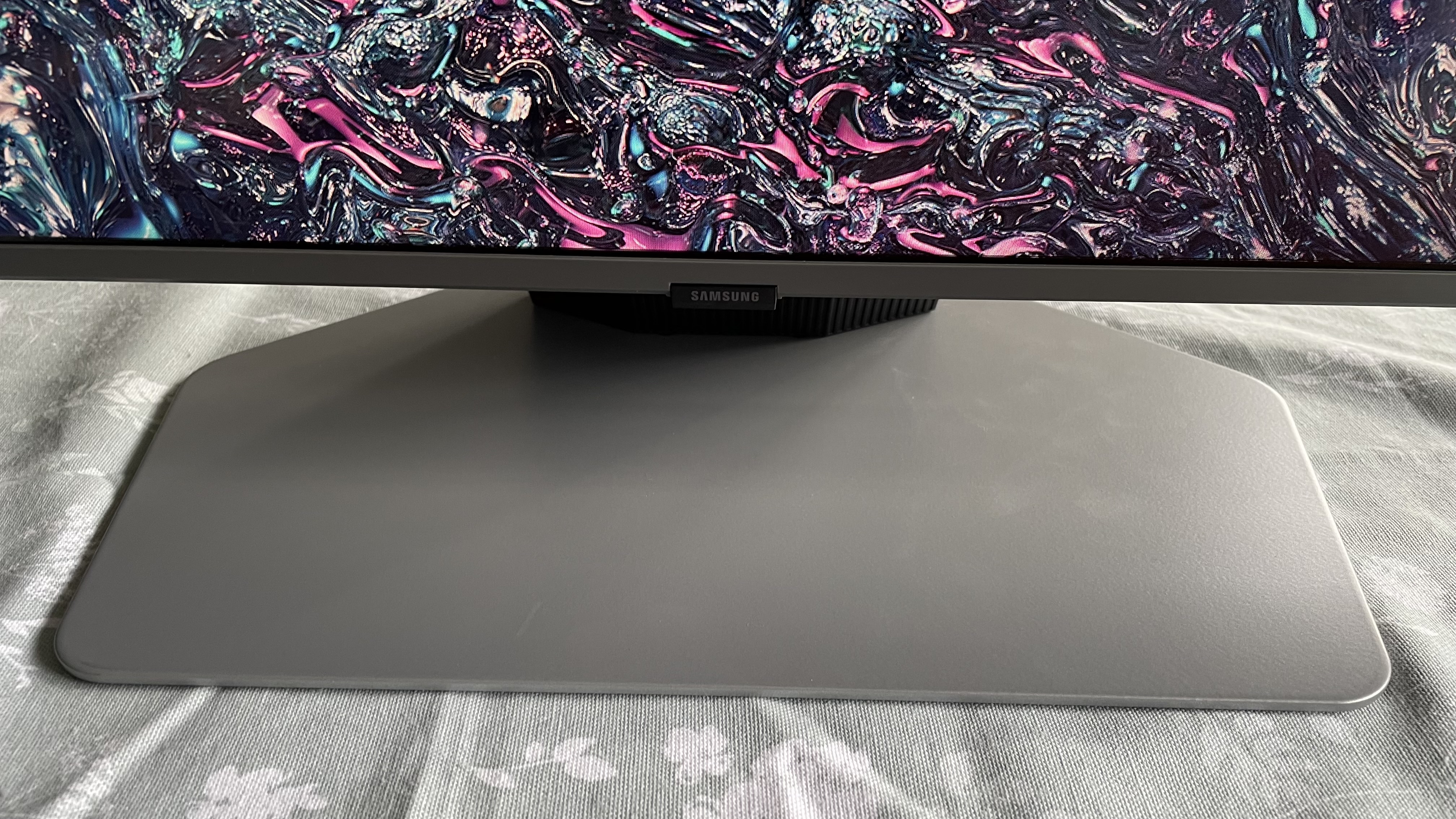
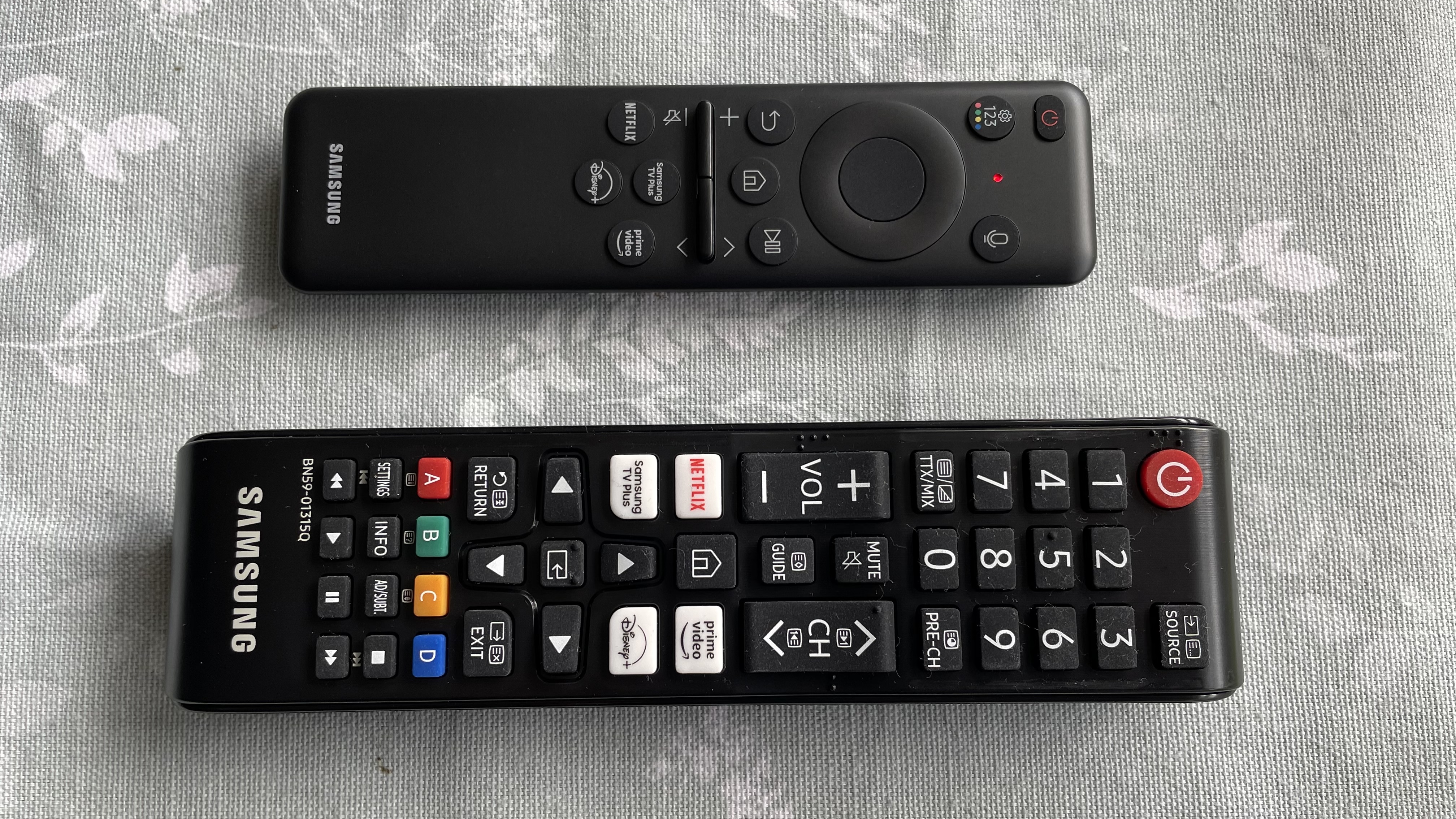
Specifications
Reasons to buy
Reasons to avoid
✅ You want a premium picture at a cheaper price: The Q80D's contrast and black levels are typical of more premium TVs
✅ You want a well-featured gaming TV for less: The Q80D's four HDMI 2.1 ports and 4K 120Hz, VRR and ALLM support are features found on more expensive TVs
❌ You don't want to play with settings: Out-of-the-box color can be an issue for the Q80D, so tweaking picture settings will be necessary
❌You need to view from multiple angles: Backlight blooming is noticeable on the Q80D when viewed off-axis, which can be an issue for larger group viewing
With surprisingly strong picture quality that rivals more expensive TVs, a near-full list of gaming features, and a competitive price, the Samsung Q80D delivers much more than the sum of its parts.
In our testing, we found the Q80D demonstrated better than expected contrast for a regular QLED TV. We did find its out-of-the-box color to be inaccurate, but some manual tweaking rectified the issue and allowed the Q80D to display a glorious picture.
It's rare at this price to find such an accomplished gaming TV. The Q80D has four HDMI 2.1 ports with support for 4K 120Hz, VRR including AMD FreeSync Premium Pro, and ALLM. Samsung's Gaming Hub allows for easy access to cloud-gaming apps and other settings, and an ultra-low 9.8ms input lag means this TV is "an outstanding gaming monitor," as we said in our review.
Another area where the Q80D impressed during testing was its built-in sound quality. It had an impressively large soundstage with excellent sound placement around the screen. We called the Q80D "one of the best-sounding TVs in Samsung’s 2024 range" which is no mean feat given the performance of the Samsung S95D and Samsung QN900D.
What's most impressive about the Q80D is its price. At this mid-range level, you'd usually expect picture quality sacrifices (mainly in contrast), but there the Q80D mostly proved us wrong. The Samsung Q80D really is the best mid-range TV you can get in a 65-inch size.
Read our full Samsung Q80D review
The best 65-inch premium OLED TV
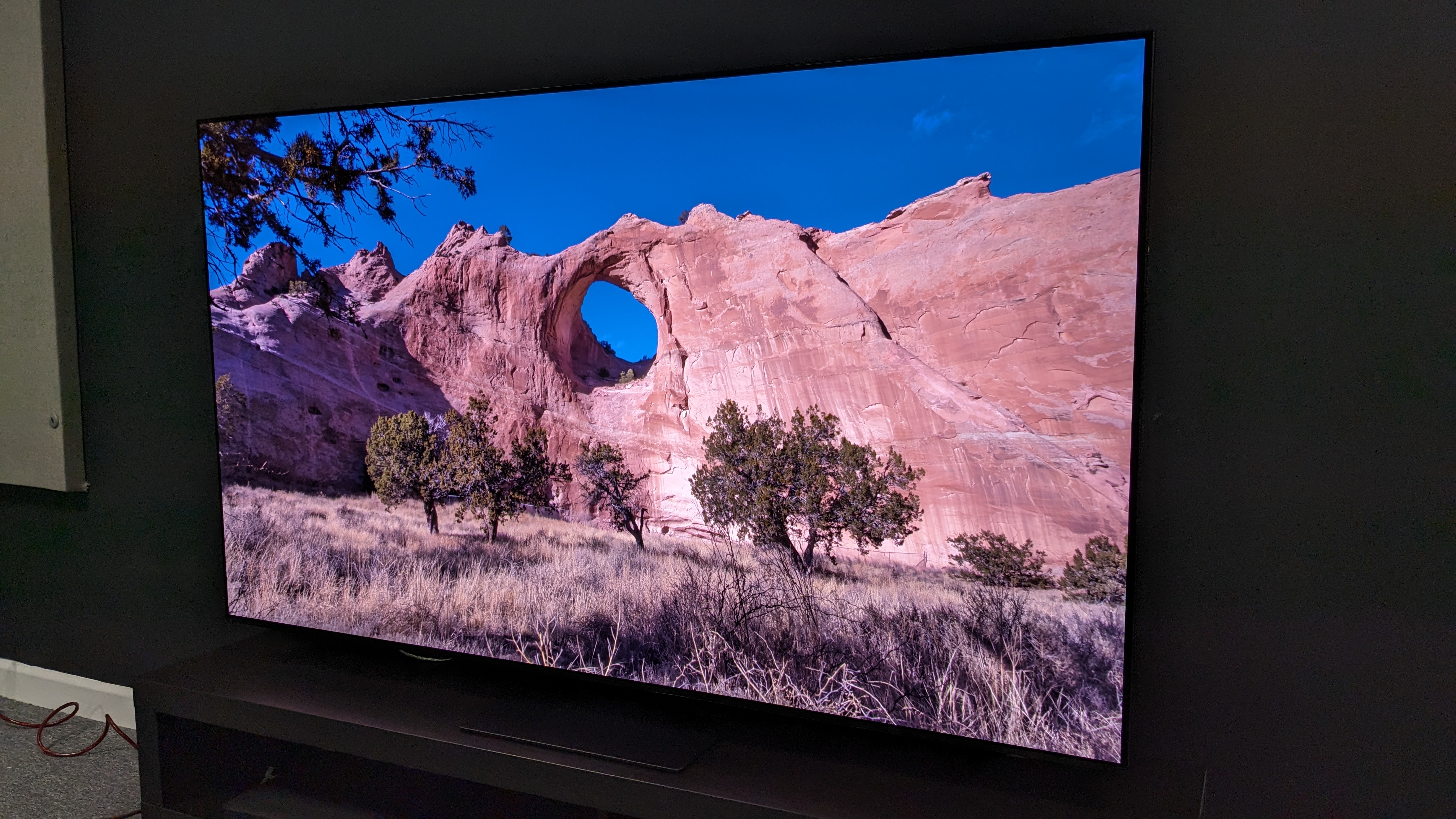
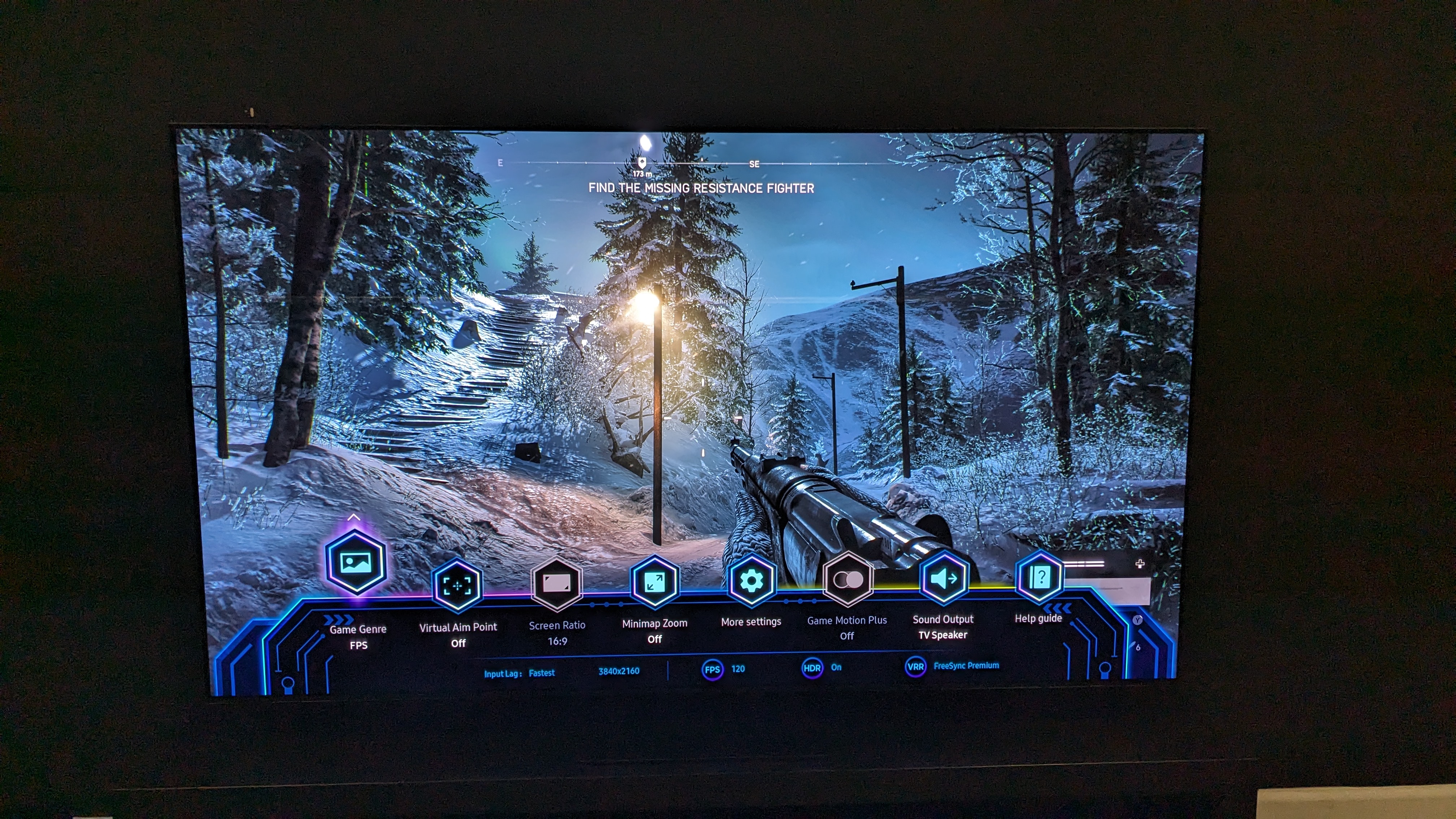
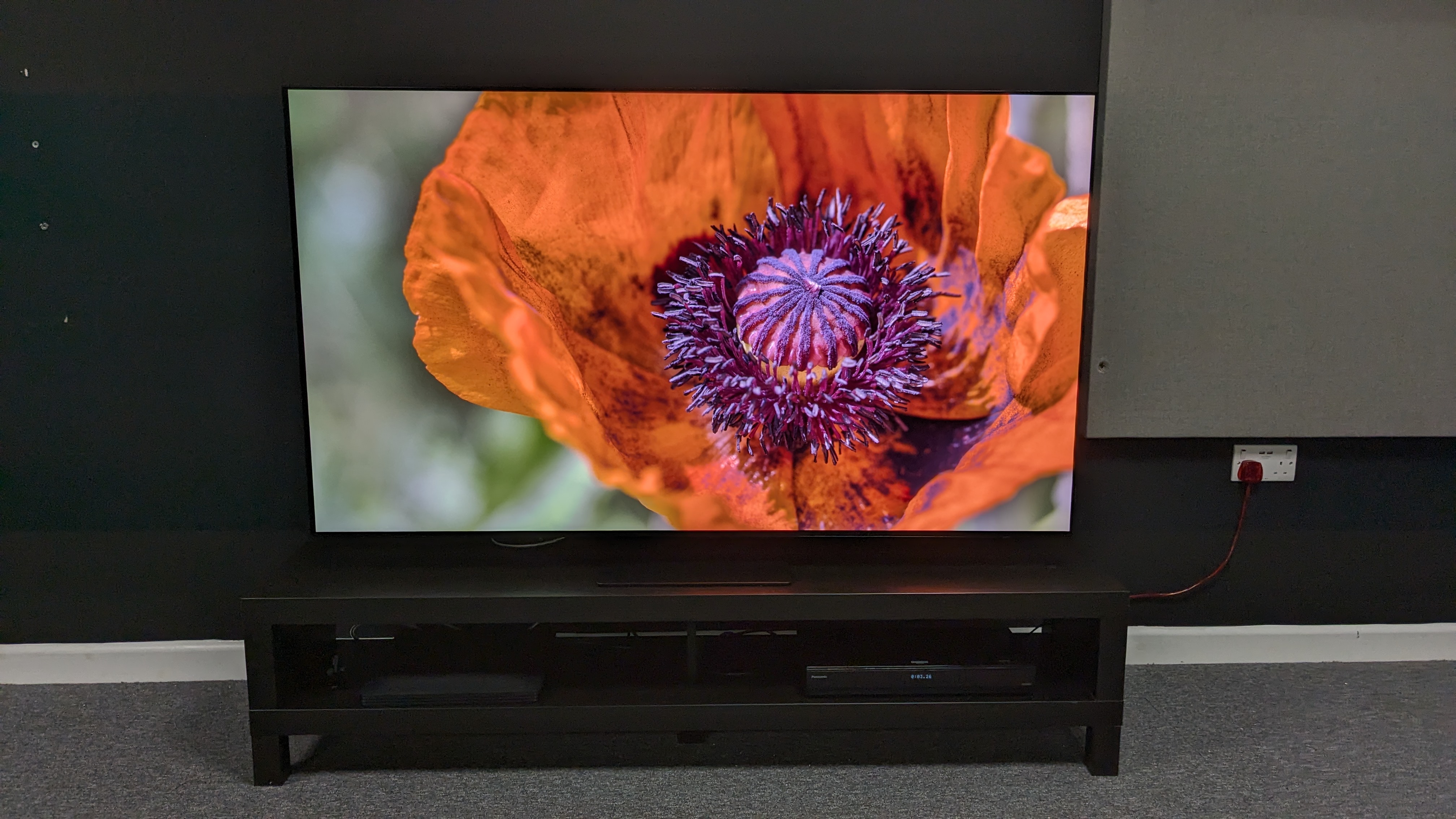
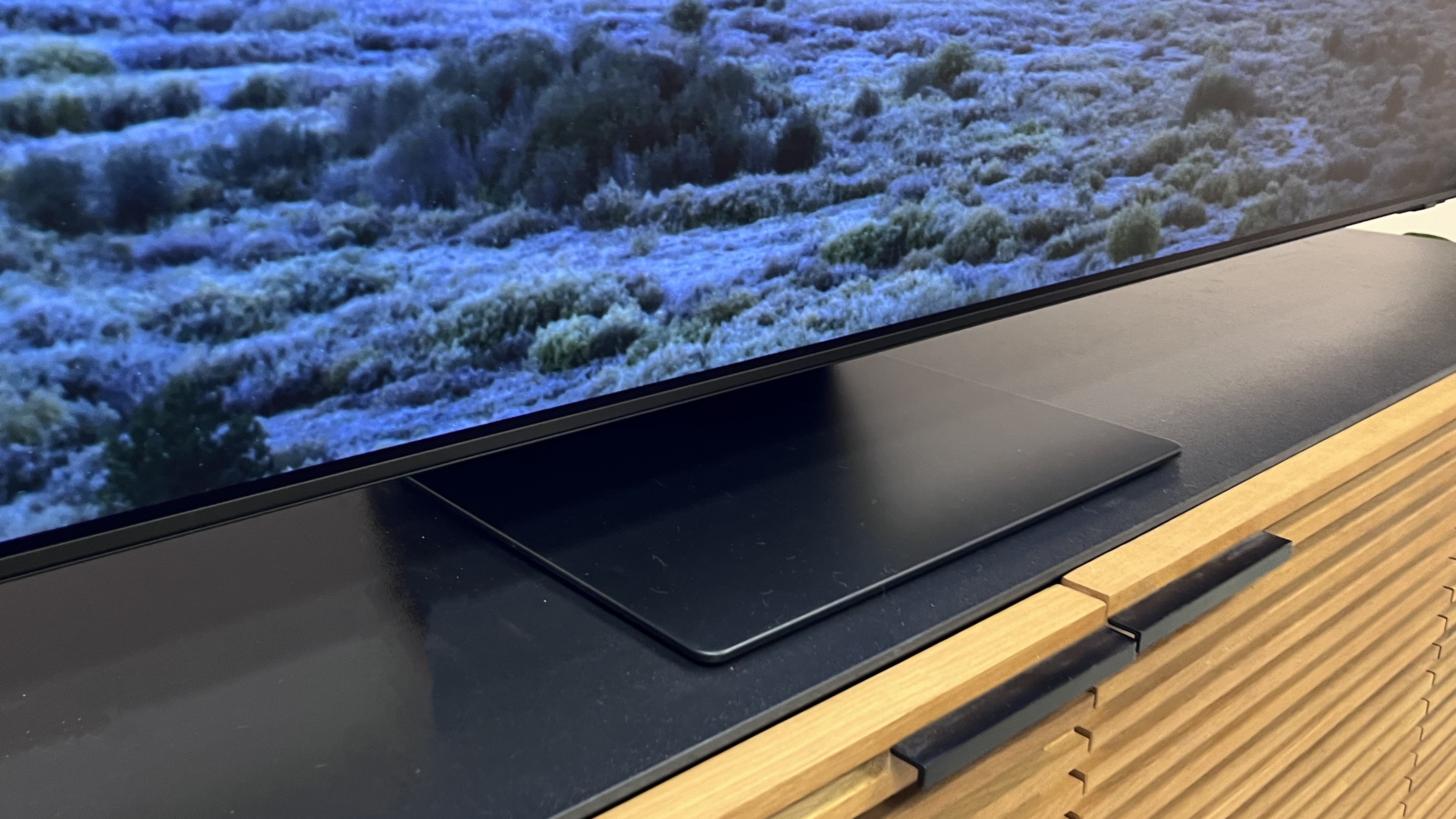

Specifications
Reasons to buy
Reasons to avoid
✅ You want excellent picture quality: QD-OLED and anti-reflection tech combine to give the S95D one of the best pictures we've ever seen.
✅ You want a premium TV for gaming: The S95D comes stacked with gaming features such as 144Hz and VRR, and games look great on it.
❌ You have a budget: The S95D carries a premium price for its features and will test a lot of people's budgets.
❌ You need Dolby Vision: The S95D supports all HDR formats except for Dolby Vision.
The Samsung S95D takes OLED picture quality a step further than its predecessor, the Samsung S95C. Carrying over the same QD-OLED technology as the S95C but combining it with new anti-screen reflection tech and AI features, the S95D offers unbeatable performance.
The picture quality of the S95D is nothing short of spectacular, with the deep blacks OLED TVs are known for but with increased brightness for punchier HDR highlights. But, the S95D's new OLED Glare Free tech means the contrast-rich picture can be enjoyed even in the brightest viewing conditions. Details on the S95D are incredibly intricate and refined, giving objects an almost 3D effect, while colors look bold, yet natural.
It's great for watching movies, but the S95D also has four HDMI 2.1 ports and supports gaming features including 144Hz refresh rate, VRR including AMD FreeSync Premium Pro, HGiG and more. It also features Samsung's useful Game Hub that brings everything gaming together, including cloud-based gaming services such as Xbox, Nvidia GeForce Now, Luna and others.
The S95D is a well-designed TV, with a sleek, modern look that adds to its premium feel, and its built-in sound is good too. You have to pay for these features, as the S95D's price will stretch budgets, but it's worth it if you can afford it. The Samsung S95D is the definition of a premium OLED TV.
Read our full Samsung S95D review
The best 65-inch OLED TV for sound
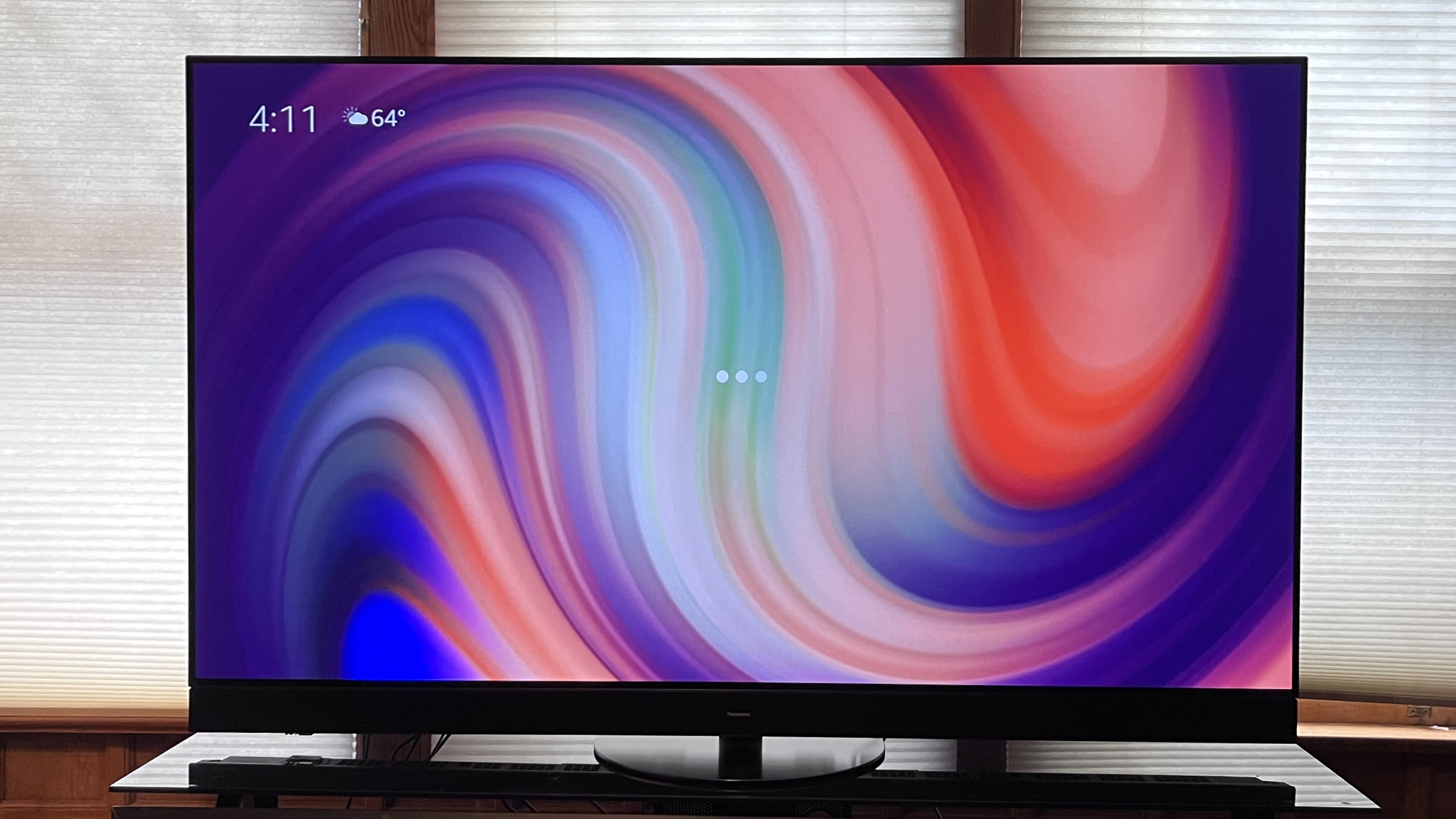
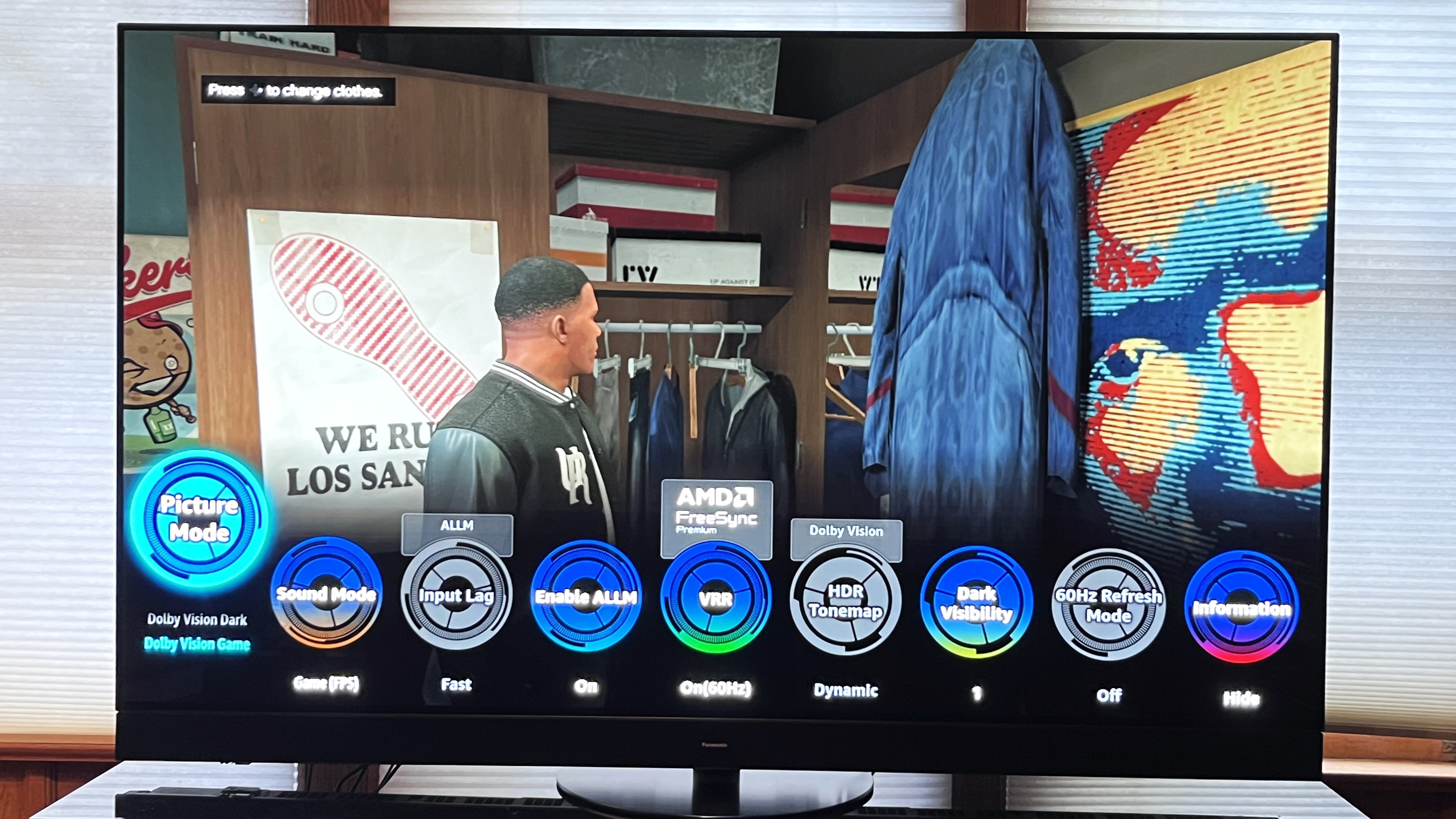
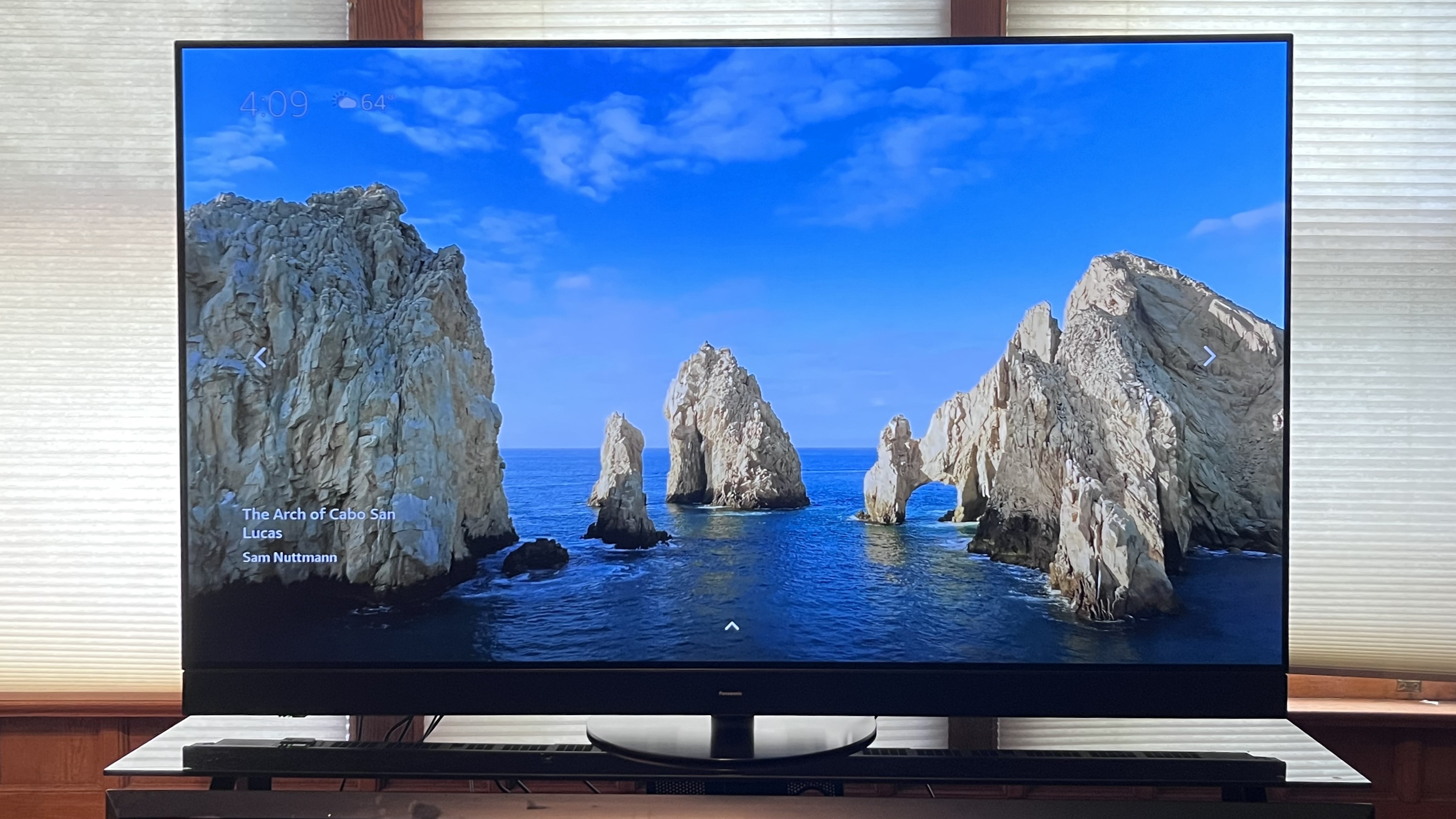
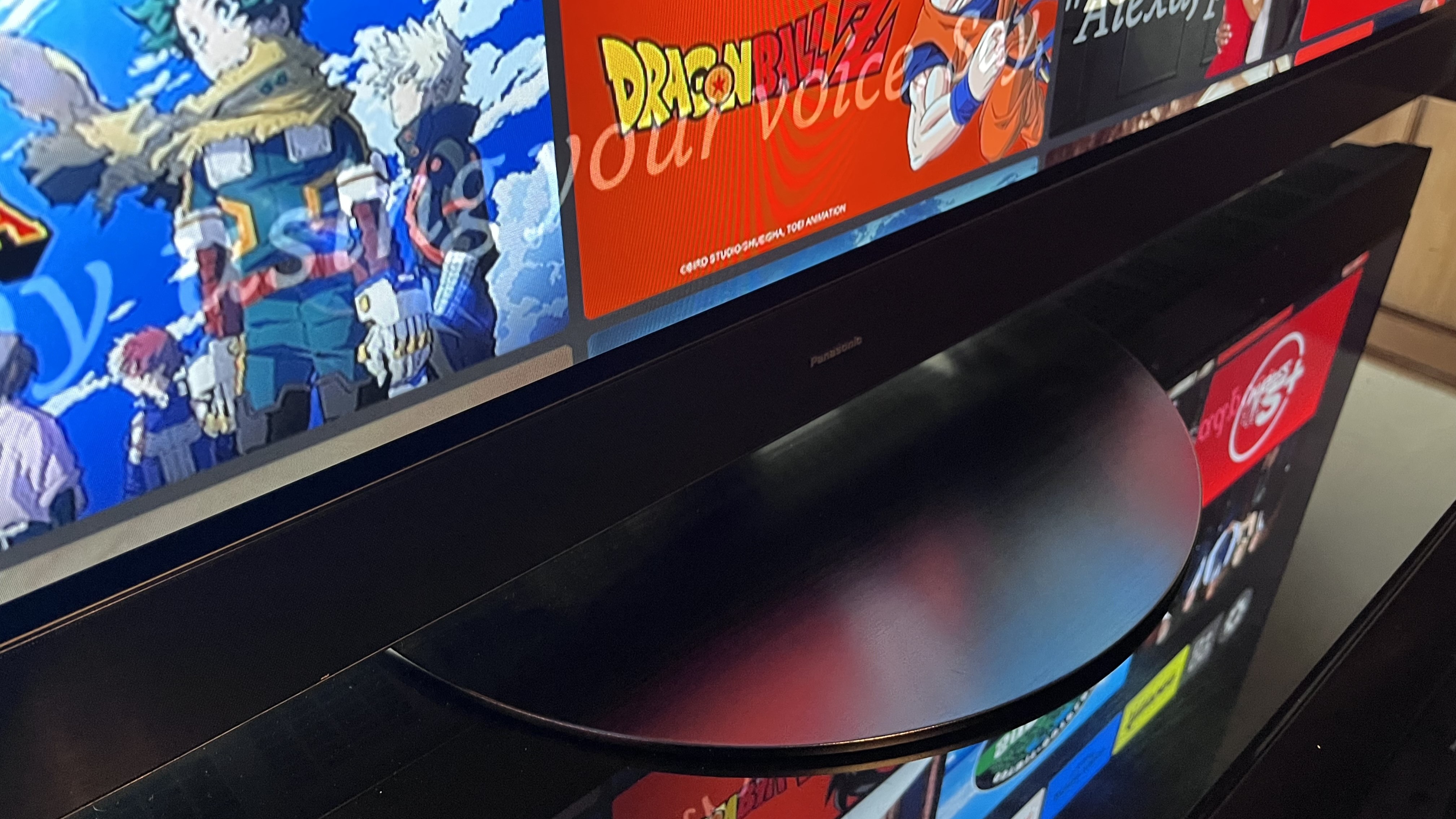
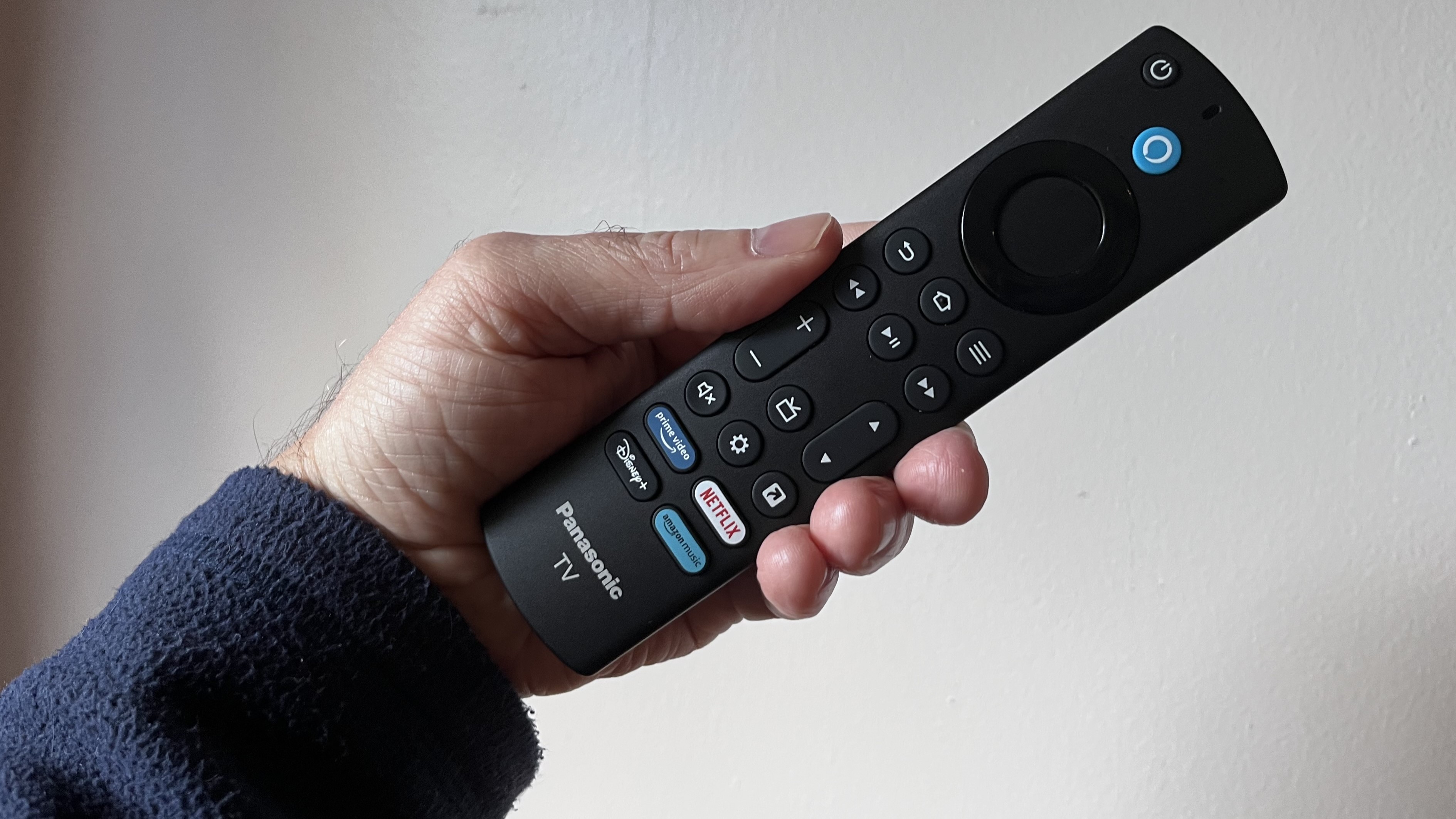
Specifications
Reasons to buy
Reasons to avoid
✅ You want a TV with powerful built-in sound: The Z95A’s 5.1.2-channel built-in speaker system does a fantastic job with immersive Dolby Atmos soundtracks. It’s good enough that you won’t need to add a soundbar.
✅ You want to watch in bright rooms: The Z95A’s picture is bright enough to hold up in bright room lighting conditions, and it also has an anti-reflection screen to reduce screen glare.
❌ You want the perfect gaming TV: The Z95A gaming features are well above average for a TV, but it only has two full-featured HDMI 2.1 ports and no built-in cloud gaming.
❌ You want the best smart TV interface: The Z95A’s Fire TV smart interface has an overly busy look, and given the TV’s flimsy handheld remote you may need to use the Alexa voice assistant for control.
The weak built-in speakers in most TVs can leave you struggling to hear dialogue in movies and TV shows, and may even sound distorted when you push the volume up too high. Panasonic addresses this problem in its Z95A OLED TV by incorporating a full 160W, 5.1.2-channel speaker system in the set’s frame. Packing in that many speakers adds to the Panasonic’s bulk, but if you’re looking for a TV that can play loud and clear enough that you don’t need to add a soundbar, the Z95A is the one.
Panasonic re-entered the US TV market in late 2024 with 55-inch and 65-inch versions of the Panasonic Z95A OLED. This flagship model features a “Master OLED Ultimate' display panel” that uses the same micro lens array (MLA) technology found in other top OLED TVs such as the LG G4, along with advanced heat management to boost peak brightness. HDR support extends to Dolby Vision IQ, HDR10+ Adaptive, and HLG, and there are both Filmmaker and Netflix Adapative Calibrated modes that provide dead-on accurate pictures out of the box.
For its 2024 TVs, Panasonic switched to Amazon’s Fire TV for streaming and smart TV functions and it’s a big improvement over the company’s previous My Home Screen platform. Gaming support includes 4K 144Hz, VRR (with Nvidia G-Sync and AMD Freesync Premium), and Dolby Vision Gaming (up to 144Hz), though there are only two HDMI 2.1 ports as opposed to the four we look for on the best gaming TVs.
Dedicated front left and right, center, and left and right surround speakers are built into the lower section of the TV’s frame and are augmented by a pair of up-firing Atmos height speakers. In our Panasonic Z95A review, we found that it delivered consistently clear dialogue, impressive spaciousness with Dolby Atmos soundtracks, and even good bass – a rare thing for a TV. A Space Tune feature uses a mic in the TV’s remote to automatically EQ the sound for your room, and there’s also a Sound Focus feature that can effectively compensate for off-center seating positions.
The Panasonic Z95A looks great, sounds great, and is a perfect 65-inch TV option for those who don’t want to deal with the extra expense and setup hassle of a soundbar. At $3,100 / £3,899, it’s definitely on the pricey side, but well worth it if you want one of the best TVs for sound.
Read our full Panasonic Z95A review
The best 65-inch TV for wall-mounting
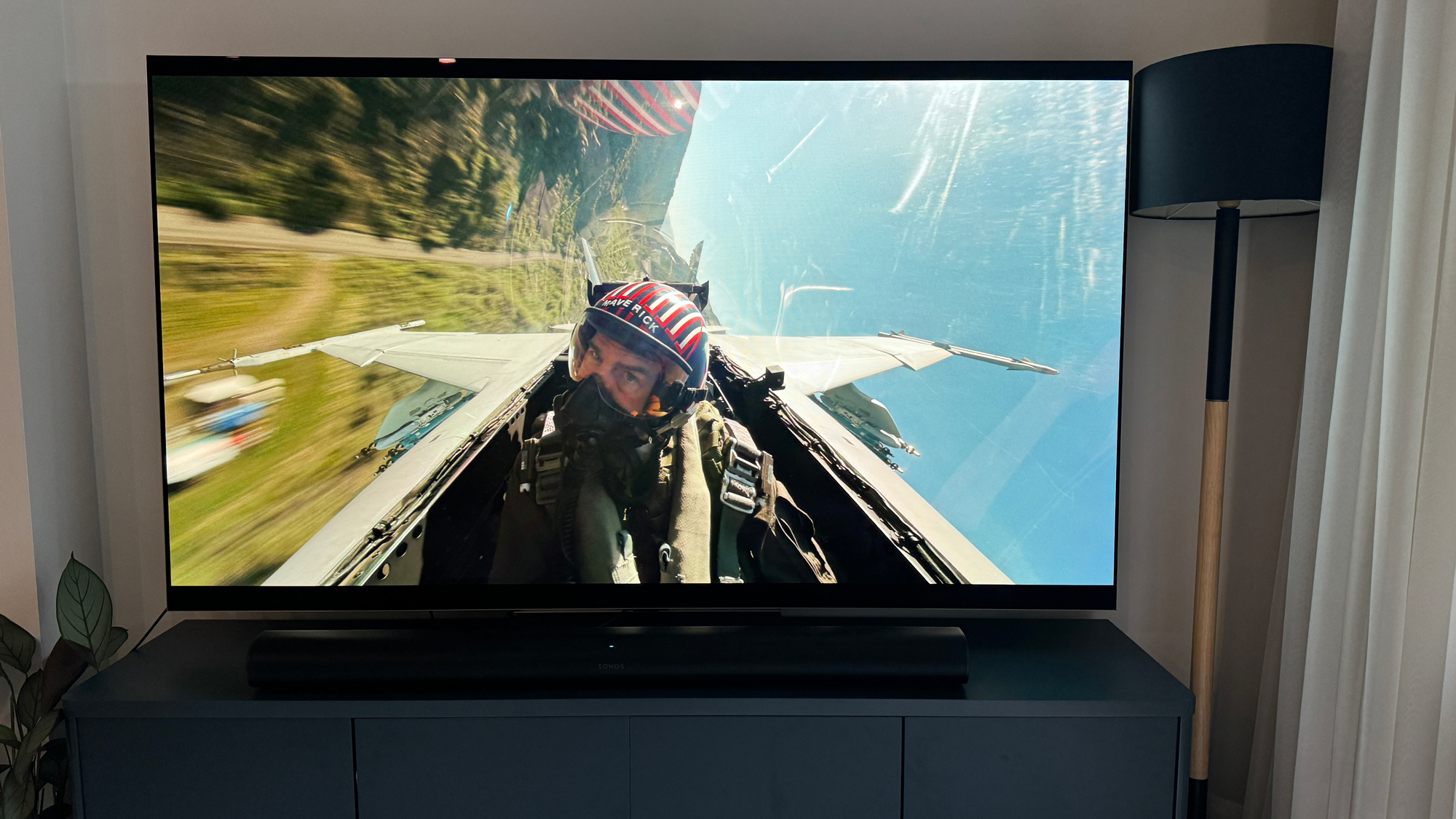
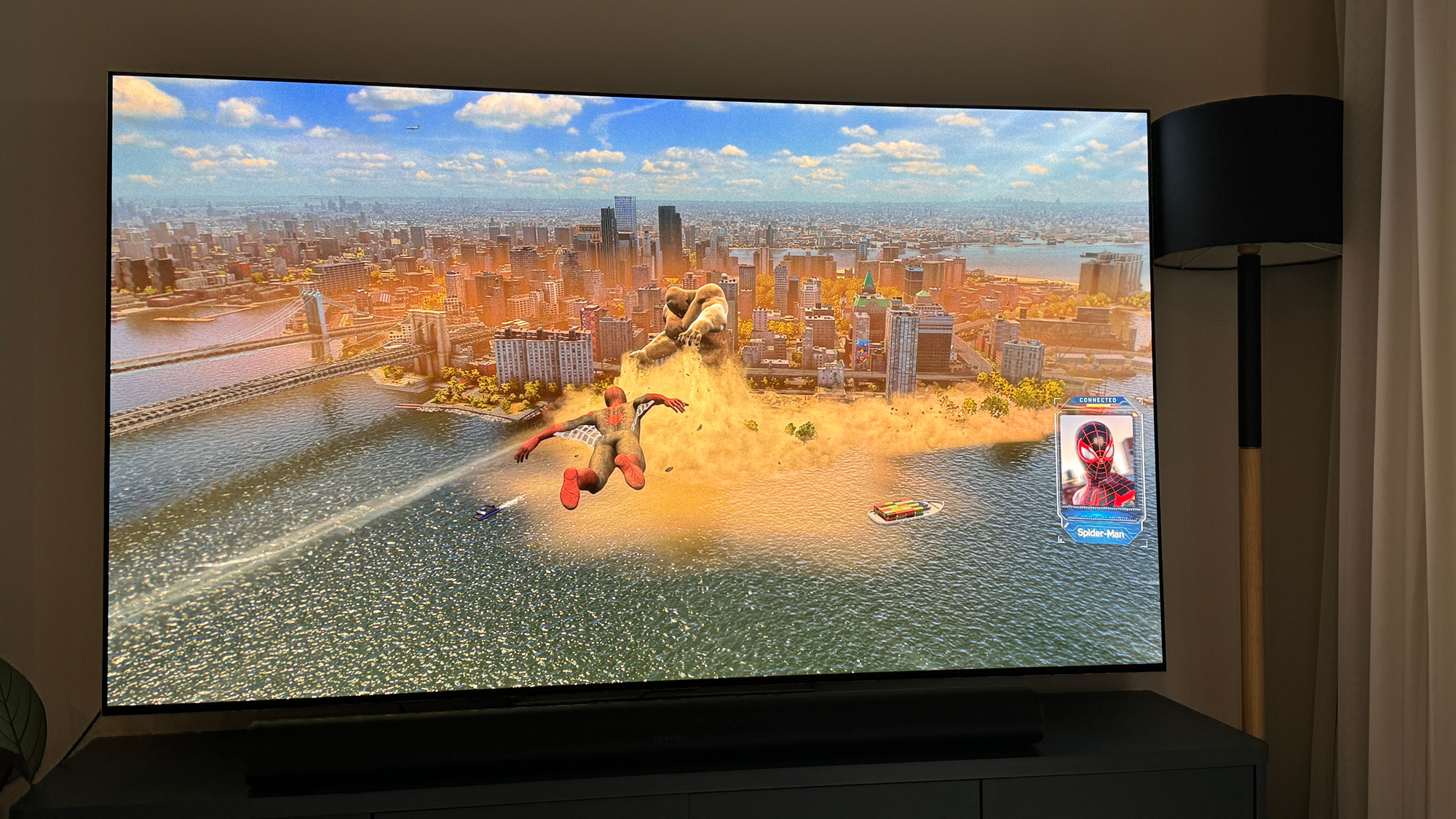
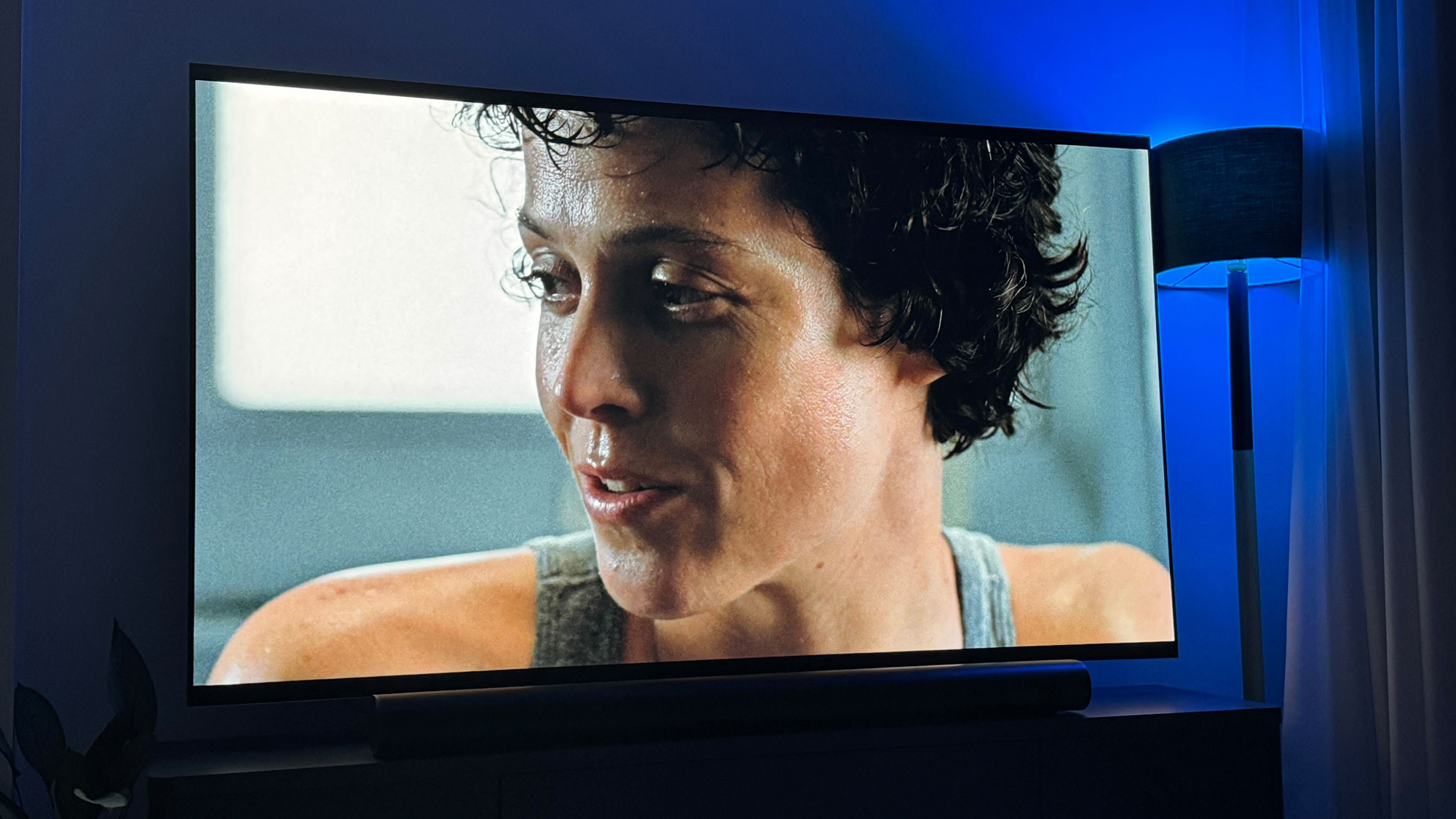
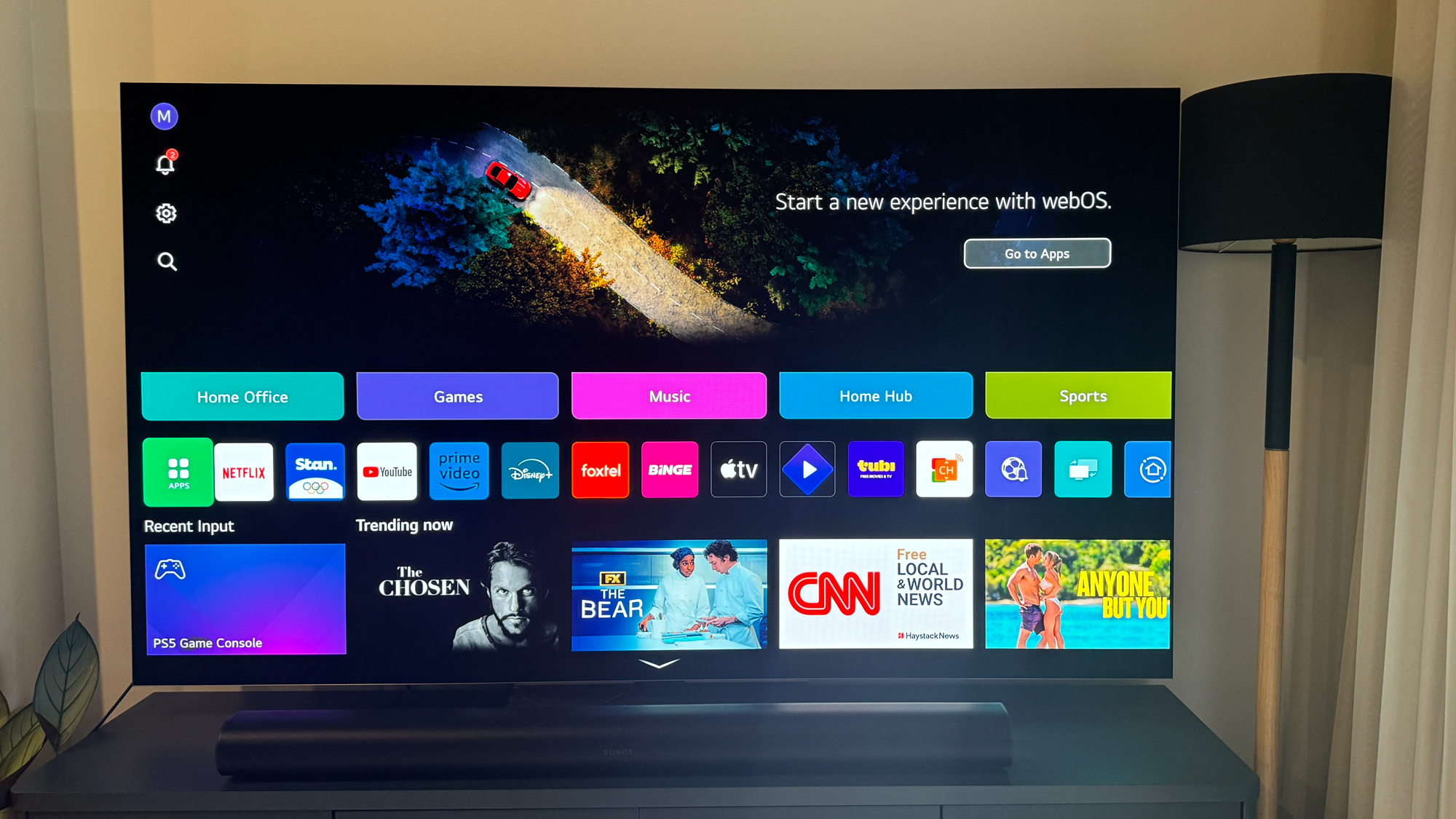
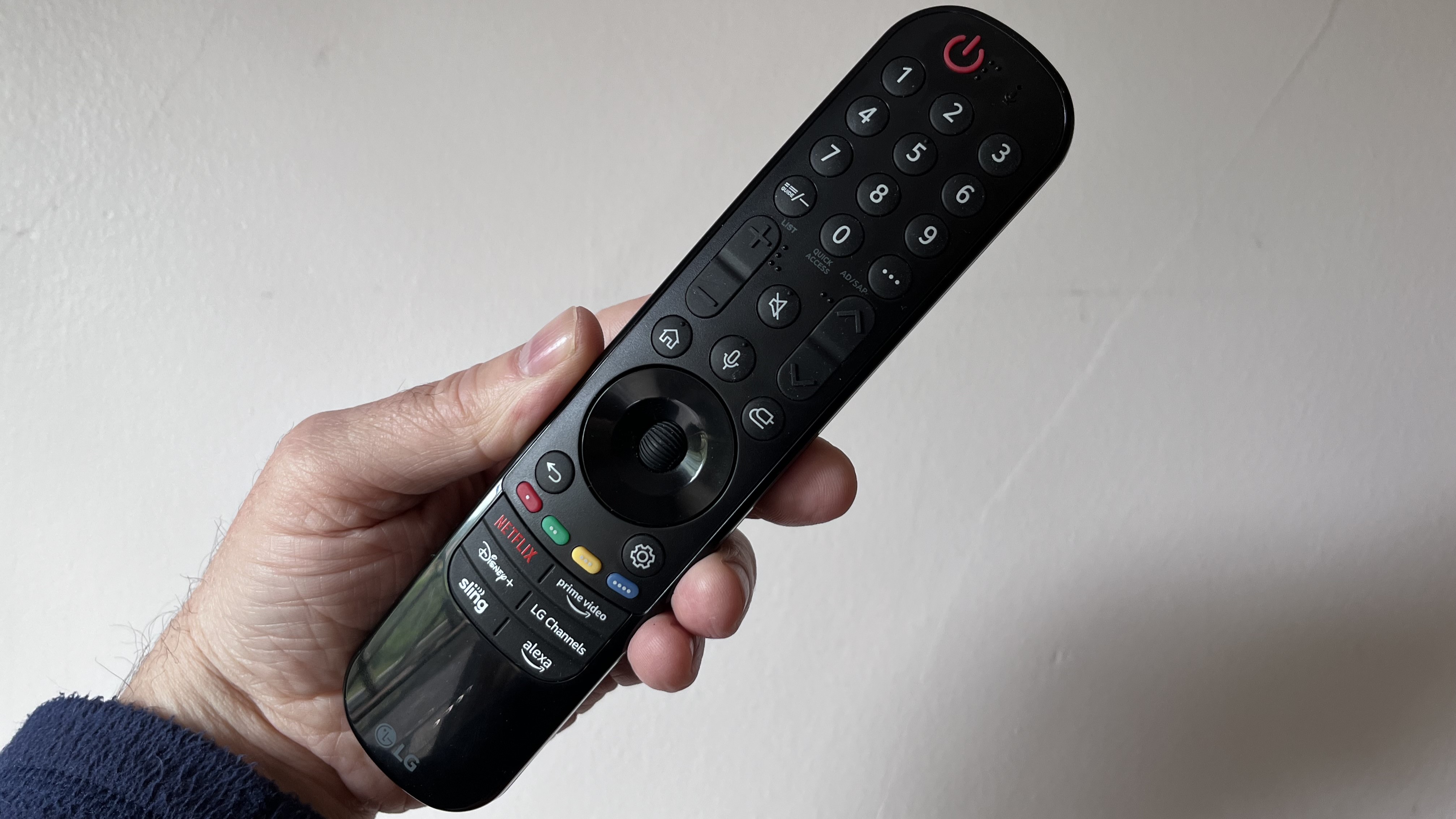
Specifications
Reasons to buy
Reasons to avoid
✅ You need a TV that looks great on the wall: The G4 boasts a thin depth and comes with a slim-fit mount, making it ideal for on-wall installation.
✅ You want a premium TV for gaming and movies: The G4 is stacked with gaming features and its second-gen MLA OLED panel takes pictures to another level.
❌ You want built-in sound: Although decent, the G4's built-in speakers can't compete with those in other sets such as the Sony Bravia 9.
❌You want the brightest OLED: While the LG G4 boasts good brightness for an OLED TV, it doesn't beat the likes of the Samsung S95D.
The LG G4 is a premium OLED TV that delivers excellent picture quality with second-generation MLA tech and a plethora of gaming features – all in a beautifully designed package with razor-thin depth.
Measuring at 1-inch (2.5cm) deep, the G4 is ideal for a flush wall-mount installation and comes with a G4-specific, slim-fit wall mount. In our review, we described the G4 as "a gorgeous TV with a virtually bezel-less build that will take pride of place if you choose to wall mount it." As a bonus, the G4 now comes with a stand (in specific sizes in the UK/US, but every size in Australia) so it can be placed on furniture as well.
The G4's picture expands on its G3 predecessor and is easily its highlight. LG's second-gen MLA OLED tech is a sight to behold, delivering excellent contrast, deep blacks and superb color reproduction. In our review, we said, "In practice, the combination of the new panel and processor is nothing short of phenomenal". We also complimented the G4's 4K upscaling, as it did a superb job improving the look of HD movies (in our case, Aliens on Disney Plus).
Gaming is also well accounted for on the G4, which has four fully equipped HDMI 2.1 ports providing 4K 144Hz, VRR (including AMD FreeSync and Nvidia GSync) and ALLM. It also features LG's Game Optimizer and game bar menu, which is great for quickly adjusting gaming settings. Playing Spider-Man 2 on PS5 on the G4, we found it ran "as smooth as butter".
While the G4 isn't the brightest OLED you can get (look to the Samsung S95D for that) and is still a premium-priced TV, the G4 delivers in most every category. (Even its built-in sound is solid, though not best-in-class.) For this marvel of an OLED TV, a wall-mount installation will be the best fit.
Read our full LG G4 review
The best 65-inch TV for sports
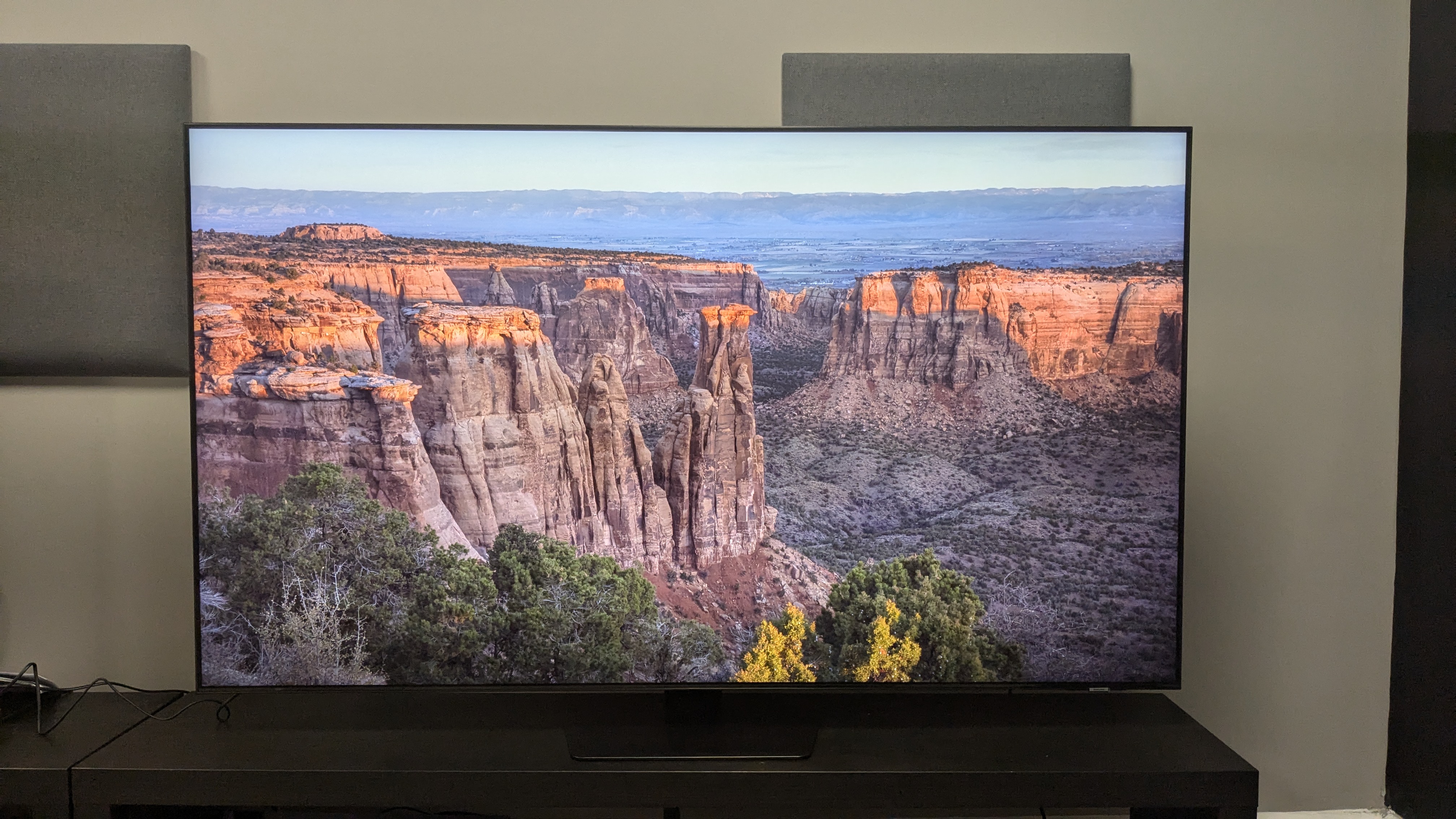
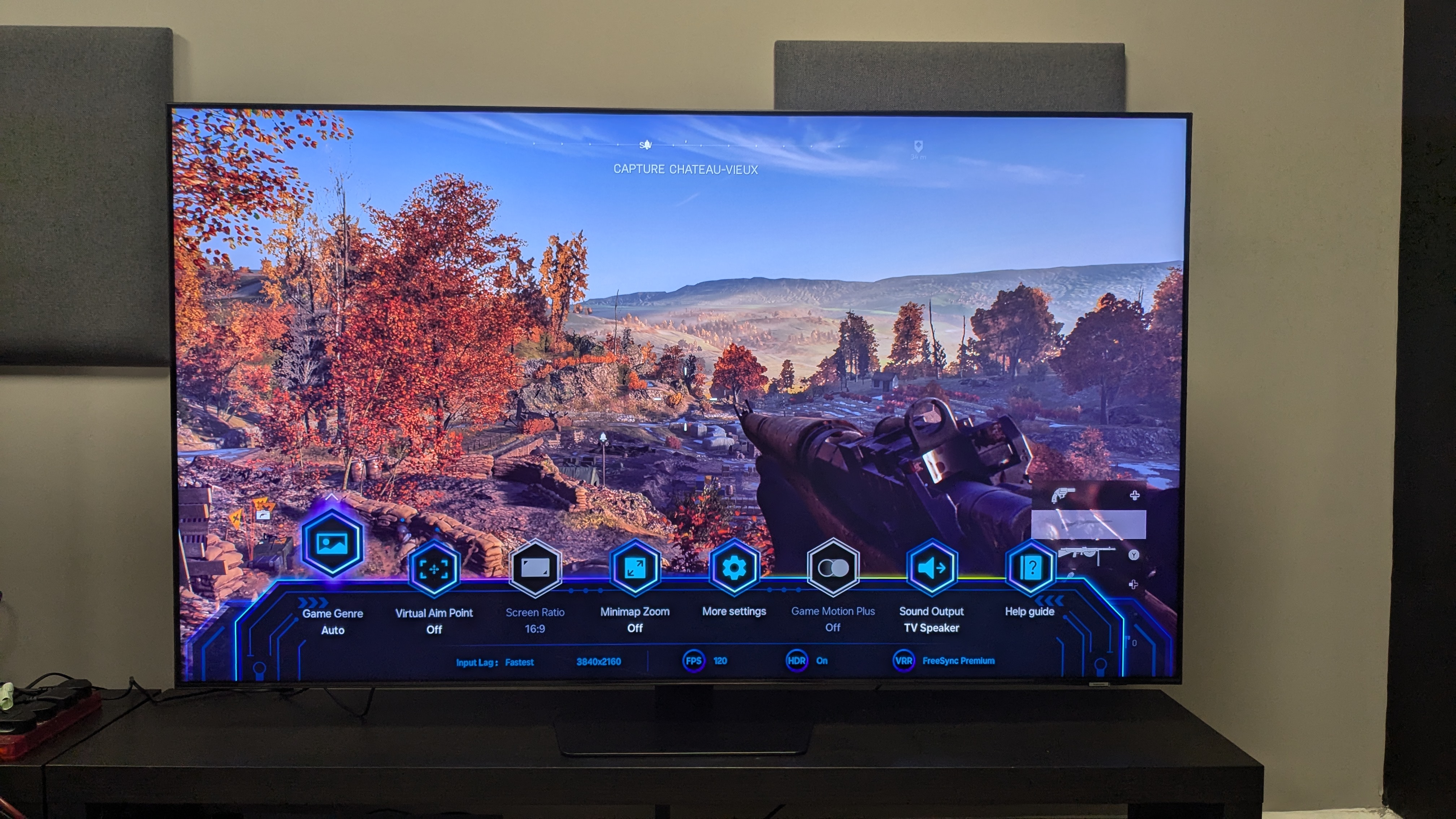
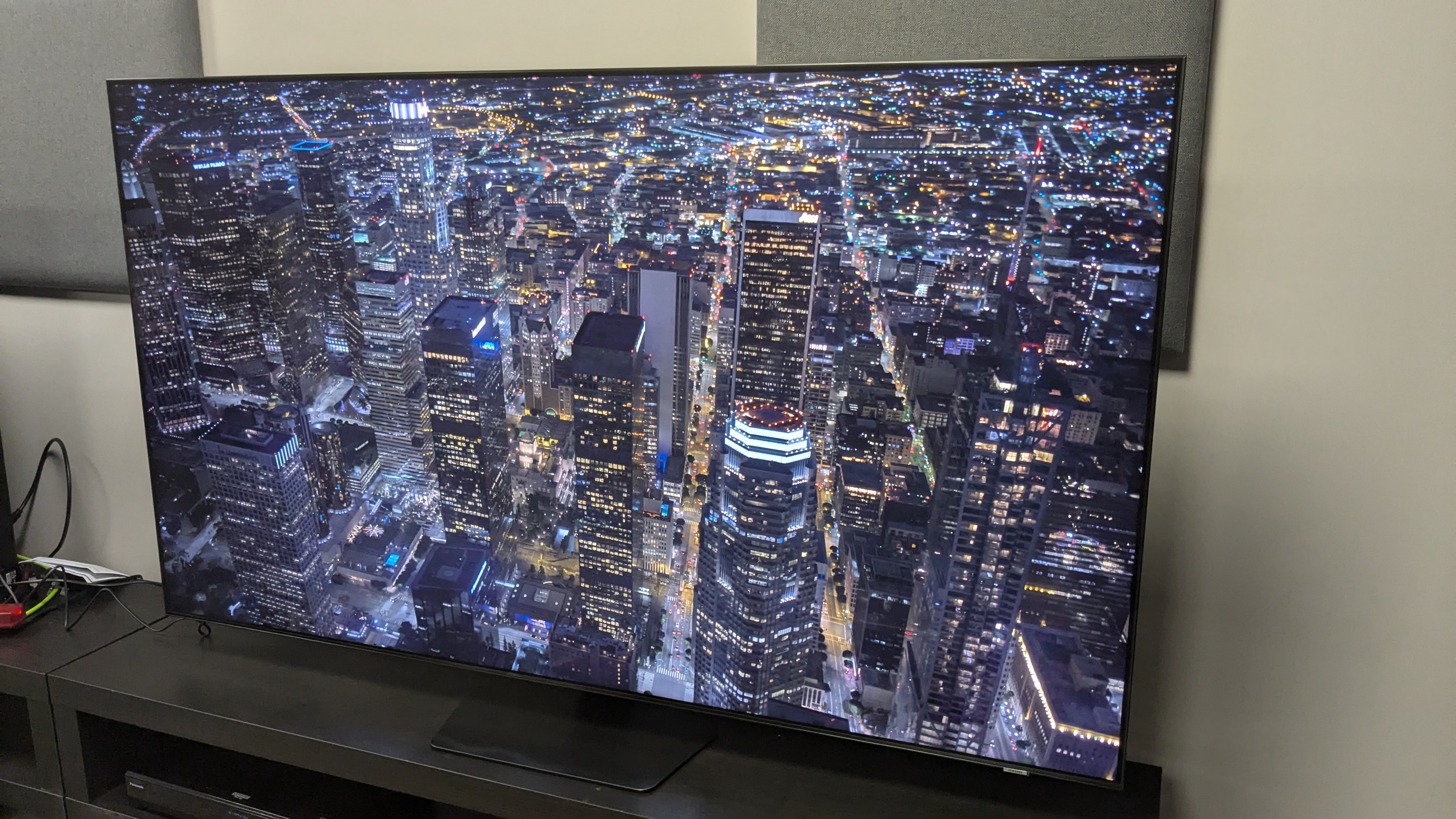
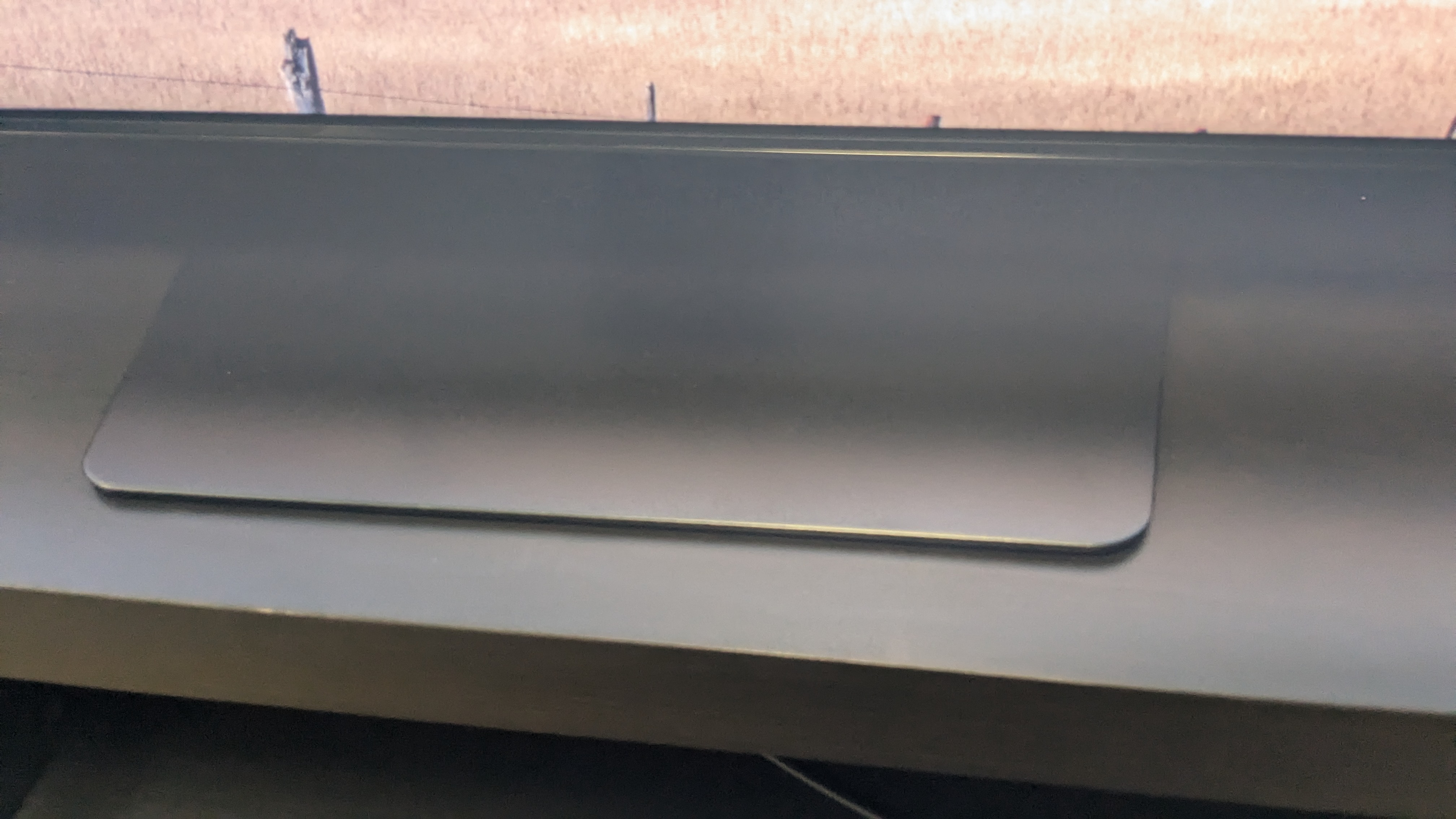
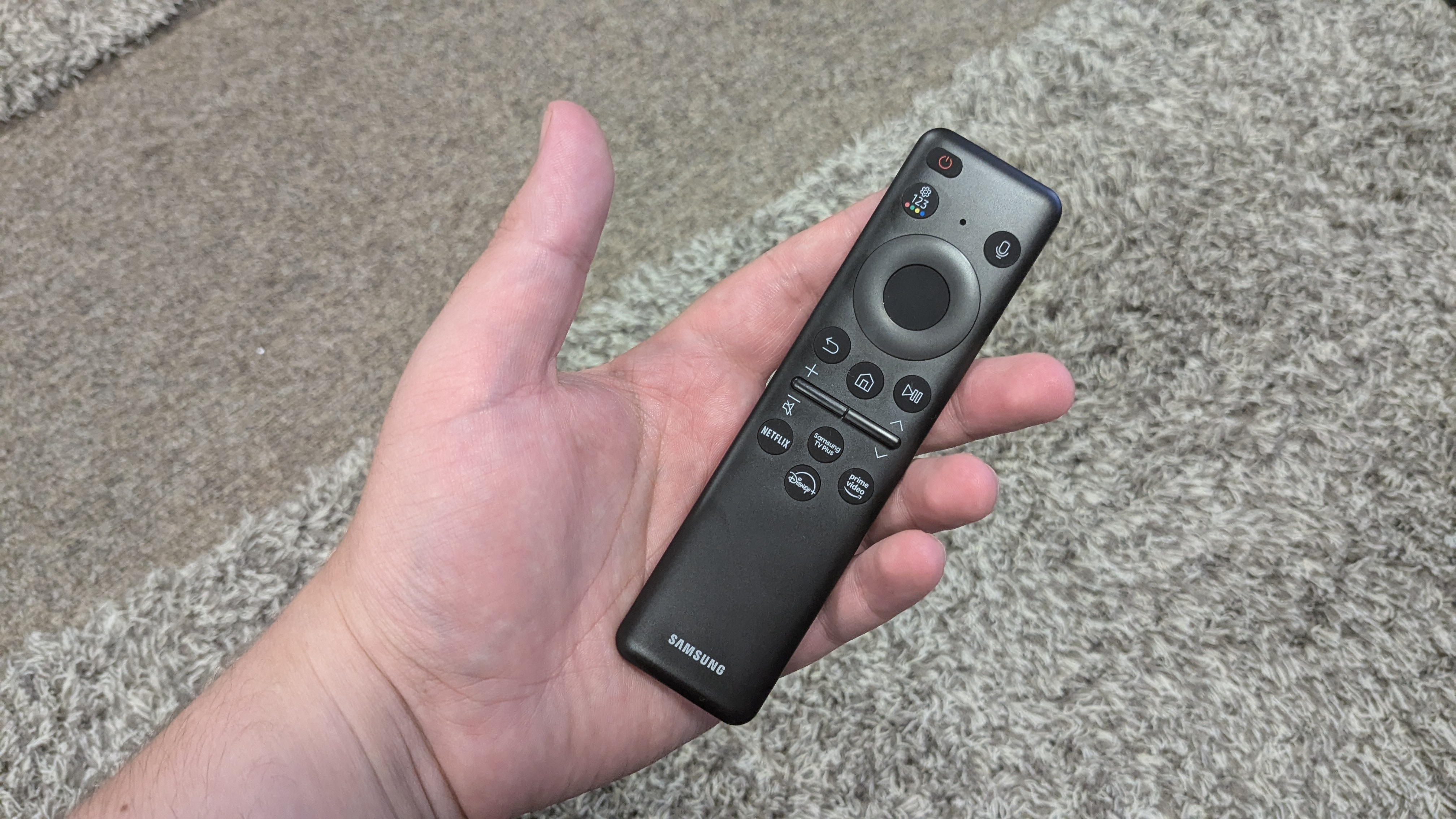
Specifications
Reasons to buy
Reasons to avoid
✅ You want great overall picture quality: The QN90D's high brightness, powerful contrast, and excellent motion handling make it a perfect TV for sports and movies
✅ You're a gamer: The QN90D is equipped with four HDMI 2.1 ports that support up to 4K 144Hz, and it has fantastic gaming performance as well.
❌ You want a high value TV :The QN90D is pricey compared to mini-LED TVs from brands like Hisense and TCL, though it offers several features those TVs lack.
❌ You want Dolby Vision HDR: Like all Samsung TVs, the QN90D doesn't support Dolby Vision HDR.
If you’re looking for a great 65-inch TV for daytime sports viewing, we can’t think of a better option than the Samsung QN90D. This mini-LED TV has an ultra-bright picture plus an anti-reflection screen that effectively reduces glare from overhead lights and undraped windows. Its motion handling capabilities are also strong, making fast-action sports – and games and action movies – look solid.
When we tested the Samsung QN90D, its peak brightness (measured on a 10% white window pattern) was 2,192 nits, and that same impressive performance extended to full-screen brightness, which peaked at 680 nits. Other top-tier TVs can hit similar brightness levels, but the QN90D also offers refined local dimming for inky blacks and detailed shadows when watching movies.
The QN90D is also a great choice for gaming. Its four HDMI 2.1 ports support 4K 120Hz (and up to 144Hz for PC gaming), VRR (including AMD FreeSync Premium Pro), and ALLM. We measured Input lag at an impressively low 9.9ms when we tested the QN90D, which also features Samsung’s Gaming Hub for cloud-based gaming using Xbox, Nvidia Geforce Now, Luna, and other services.
Along with its bright, refined picture, the Samsung QN90D has a remarkably slim, yet sturdy design with an all-metal base and bezel-free display. It comes with Samsung’s rechargeable SolarCell remote control, and a 4.2.2-channel, 60W built-in speaker array delivers powerful Dolby Atmos sound with an Object Track Sound+ feature for accurate placement of movie dialogue and sound effects.
Read our full Samsung QN90D TV review
Also consider
Amazon Fire TV Omni Mini-LED
Amazon's first foray into mini-LED TVs, the Omni Mini-LED gives real bang for your buck, delivering great picture quality and performance, especially for sports, along with a great suite of smart and gaming features for a competitive price. It's just beaten to the list by the Hisense U7N and TCL C805 respectively.
Here's our full Amazon Fire TV Omni Mini-LED review.
Roku Pro Series
Roku’s top TV is a mini-LED model that’s affordably priced and can regularly be found at a discount. With 4K 120Hz support and ultra-low input lag, the Pro Series is a very good option for gaming, and it also has a premium design and great sound quality from its front-firing built-in speakers. You also get the Roku smart TV interface, which is more streamlined and user-friendly than the Amazon Fire TV smart interface.
Here's our full Roku Pro Series review.
Hisense U6N
The Hisense U6N doesn't quite offer the same features or performance vs price as the Hisense U7N (#2 on the list) but if you're on a strict budget, it's still a very good option. If you can stretch your budget, the U7N is still the better option though, especially for gamers.
Here's our full Hisense U6N review.
Hisense U8N
Hisense’s mini-LED TV is a great mid-range alternative to the Samsung Q80D, currently #4 in our guide. When we tested the U8N, we were impressed with its high brightness, refined local dimming, and generally excellent picture for the price. It’s not as complete a gaming TV package as the Samsung Q80D but otherwise favorably competes.
Here's our full Hisense U8N review
Philips OLED809
Philips' mid-range OLED offers a unique feature here: Ambilight, which spreads light matching what's on-screen across your walls, making it feel even larger. Combine this with the OLED809's stunning picture and you get a unique viewing experience. Plus, it comes well equipped for gaming. This is a great alternative for those looking for an alternative to the LG C4 (#1 on the list), but the LG is cheaper.
Here's our full Philips OLED809 review.
Sony Bravia 8
The Sony Bravia 8 is another OLED TV with great sound quality, though it lacks the full built-in 5.1.2-channel Dolby Atmos speaker system the Panasonic Z95A (#6 on our list) provides. Its picture isn’t as bright as what you get with the Z95A, but it costs a fair amount less.
Here's our full Sony Bravia 8 review
Sony Bravia 9
Sony’s flagship TV is a mini-LED model with excellent picture and sound quality and a premium design that will make it look good in your living room even when turned off. The only downside to the Bravia 9 is its price, which is higher than even the premium OLED pick on our list (Samsung S95D at #5).
Here's our full Sony Bravia 9 review
TCL QM8651G
TCL’s top mini-LED is another great mid-range alternative to the Samsung Q80D, though it lacks some gaming features found on that model. Like the Hisense U8N, we admired the QM8651G’s bright picture and well-defined blacks when we reviewed it. The QM8651G is only available in the US, where it’s comparably priced to the Samsung Q80D.
Here's our full TCL QM8651G review
How to choose the best 65-inch TV
Should I buy a 65-inch TV?
We’ve answered this question in a much more detailed guide elsewhere on TechRadar, but the short answer is: yes, if you can afford to.
Basically, a bigger TV is often a better TV and, as mentioned earlier, these large-scale displays typically boast the best specification when it comes to new tech and useful features.
As 65-inch models are becoming increasingly popular, they’re also becoming less expensive, and we’d almost always recommend parting with a little bit more money to enjoy the benefits of such an impressive screen size.
Which is the best 4K TV brand?
The question of the best 4K TV brand (for 65-inch models, in particular) is a difficult one to answer when there’s so many great models out there. Displays from the likes of LG, Sony and Samsung regularly make this list, but they’re often joined by equivalent models from brands like Hisense and Panasonic.
A better question might concern what to look for when buying a 65-inch 4K TV, to which we’d say picture quality, app support, other handy bells and whistles like voice control and, of course, price.
Features like HDR support, Dolby Vision and Atmos, OLED panels and the like can be real differentiators, too, when it comes to finding the 65-inch 4K TV with the best viewing experience, though it’s no surprise that the more of these extras a display has, the more expensive it tends to be.
What is 4K resolution?
4K is, essentially, an ultra-high-definition screen resolution. Also called UHD or 4K UHD, the display technology has become the default screen resolution across all of the TVs that you’re likely to see in stores today – as well as many PC monitors, too.
The very best UHD TVs pack over eight million pixels in their high-res displays – that’s four times the amount you’ll find on the Full HD panels in today's small TVs.
You don’t necessarily need access to 4K entertainment content to enjoy the benefits of 4K resolution, either, since many of the best 4K TVs – i.e. most of the 65-inch displays on this list – boast impressive upscaling technologies that bolster content filmed in HD.
The only displays which sport a sharper picture are the 8K variety – though, being a still-new technology, choice in that department is much more limited and, naturally, 8K models are far more expensive.
4K resolution is increasingly common for new releases on the best streaming services, and obviously is needed to take advantage of the best 4K Blu-ray players. The PS5 and Xbox Series X consoles are also both built around 4K, so we focus on having 4K TVs in our list of the best gaming TVs.
Should I choose OLED or mini-LED?
Whether you should buy OLED or mini-LED depends on your living situation, but most importantly your personal preference. Both types of tech feature heavily in our list!
OLED is a type of panel that uses self-emitting pixels allowing for greater control of the contrast (because each pixel can be turned off individually) which results in deeper black levels and contrast, and arguably bolder colors. Generally, OLED TVs much dimmer than mini-LED TVs, and can struggle in brighter rooms where reflections are likely, unless you opt for more premium OLEDs such as the Samsung S95D and LG G4.
Mini-LED is a type of backlight that uses (you guessed it) tiny LEDs to allow for greater light control and dimming compared to standard LCD TVs. Mini-LED TVs tend to offer significantly more brightness than most TVs, resulting in brighter pictures and colors. Although their black levels aren't quite as accurate as OLED (especially in more mid-range models), they're still a step-up from LCD and QLED TVs. The Hisense U7N and TCL C805 are examples of mini-LED TVs on this list.
In a 65-inch size, both these technologies work well, though you can get a mini-LED TV for a far lower price in a 65-inch size compared to an OLED – though premium mini-LED sets cost the same as elite OLED TVs.
It depends on your budget, and how bright your room is. A budget OLED TV, in particular, will have a much harder time beating reflections during daytime sports viewing than a similarly priced mini-LED will. But the OLED will be more cinematic.
What gaming features should I look for in a 65-inch TV?
What gaming features you're looking for in your TV depends on your gaming device, whether it's a console (PS5 or Xbox Series X) or PC. There are some fundamental gaming features that you should be on the look out for however.
Ideally, you'll want 4K 120Hz support, a higher refresh rate that is supported on current gen consoles and PC. You'll also want Variable Refresh Rate (VRR), which allows the display to adjust its frame rate according to the source for smoother gaming, and Auto Low Latency Mode (ALLM), a mode that optimizes a displays' settings to reduce input lag and insure a smooth experience.
For these features, you'll need HDMI 2.1 ports. Ideally, you'll want four if you have multiple consoles (the LG C4 and Samsung S95D are two TVs on this list) but most TVs come with two.
As for more device-specific features, if you have an Xbox Series X or PC, you'll want Dolby Vision gaming (the PS5 doesn't support Dolby Vision) as this will add an extra dimension to your game's picture quality (it's worth noting only specific games support Dolby Vision).
If you want to use your TV for PC gaming, you'll want to look for even higher refresh rates such as 144Hz (again the C5 and S95D support these) as this will ensure even better response times. If you have an Nvidia GPU, you should look strong at LG TVs, which have G-Sync included. Many TVs support AMD FreeSync.
New 65-inch TVs coming in 2025
There are a number of models arriving in 2025 that we expect to join or replace the current entries on this list.
LG's 2025 OLED TV range features the LG G5 OLED, which promises improved peak and fullscreen brightness, 165Hz gaming and a faster processor. There's also the LG C5, with its predecessor the C4 sitting at the top of this list, which again is set to offer higher brightness and better processing. From what we saw of the LG C5, it looks to be as solid as always – can it get the price right?
Samsung 2025 OLED range is headlined by the Samsung S95F. We loved its predecessor, the S95D (featured on this list) thanks to its reflection-beating OLED Glare Free tech and from what we've seen of the S95F, OLED Glare Free 2.0 looks even more impressive. There will also be a more affordable Samsung S90D OLED TV that could be strong.
Samsung's 2025 mini-LED TV range features some excellent models, but it's the Samsung QN90F that's caught our eye. The successor the QN90D, which is our pick as the best TV for sports on this list, the QN90F looks to offer not only higher brightness (perfect for daytime sports viewing) but also introduces Glare Free tech of its own to really make sure it's always visible.
Panasonic introduced the Panasonic Z95B in its 2025 TV range, and if it's anything like its predecessor, the Z95A (best for sound on this list), then it'll be a spectacular TV. We've had a preview and so far, things are looking very good, with stunning contrast that takes picture quality to an even higher level. It's also sure to feature a top-notch built-in sound system.
TCL announced its QM6K TV earlier in 2025 and its said to have a 50% brightness boost, 500 local dimming zones, improved HDR color gamut coverage and a competitive price (suggested $999.99 at CES 2025). We loved the TCL QM851G in 2024 and although it didn't make this list, it's still a superb TV. Could the QM6K make it as a budget alternative? The TCL QM7K is also looking like a very strong contender.
Sony typically announces new TVs in spring, and in March, it dropped news of a new flagship OLED TV, the Sony Bravia 8 II, which will be available in 65- and 55-inch screen sizes. The Bravia 8 II features a QD-OLED panel that Sony says is 50% brighter than the W-OLED panel used in the Bravia 8, which carries over in Sony’s 2025 lineup. It also has Acoustic Surface Audio+, which embeds speakers behind the display that turn the entire screen into a speaker.
Along with the new OLED, Sony announced other new TVs that will be available in a 65-inch screen size: the Bravia 5, an entry-level mini-LED model, and the Bravia 2 II, a budget LED model. Notably, the Bravia 5 series TVs feature Acoustic Multi-Audio, which uses tweeters positioned on the left and right sides of the TV’s frame along with down-firing X-Balanced speakers to provide enhanced audio performance.
Hisense also opted for a March launch of its 2025 TV lineup. Each new TV series features a 65-inch size option, including the U9 series, which was previously limited to 75- and 85-inch screen sizes. Along with multiple AI picture-enhancing features, the U9 mini-LED features comprehensive gaming support, including a 165Hz native refresh rate and FreeSync Premium Pro. Like its Hisense U9N predecessor, it also has a built-in 4.1.2-channel speaker array with Dolby Atmos and DTS:X support.
The Hisense U8, U7, and U6 series TVs are all mini-LED models that we expect to repeat the success of their Hisense U8N, U7N, and U6N predecessors in providing great performance for the price. Hisense says the U8 series models will provide up to 5,000 nits of brightness and an expanded number of local dimming zones. The Dolby Vision IQ and HDR10+ high dynamic range formats are supported, and the TVs are IMAX Enhanced certified.
How we tested the best 65-inch TVs
When we test the best 65-inch TVs, we structure our tests around the same criteria found throughout our reviews such as picture quality, gaming performance, and value for money. The TVs are tested using both objective measurements and subjective impressions.
Starting with picture quality, we’ll cycle through the TV’s preset picture modes such as Standard and Movie to see which is most accurate. We’ll then play a variety of sources including 4K Blu-ray and streaming, HD Blu-ray and streaming, and lower-resolution sources to test upscaling, which is important on a larger screen size such as a 65-inch TV.
Testing picture quality on 65-inch TVs, we look at how well the panel, particularly on LCD models, handles black uniformity (the ability to evenly display dark tones across the screen) as larger LCD screens tend to struggle with this. We also evaluate how well a 65-inch screen maintains contrast and color accuracy from off-center seats, which is another variable with LCD-based TVs.
For our objective tests, we use specialized equipment including a colorimeter to measure the patterns displayed by a test pattern generator and record the results with Portrait Displays’ Calman calibration software.
The first area we test is brightness using different-sized white windows such as 10% (for HDR highlights) and full-screen brightness. A 10% window will indicate what peak brightness to expect and also demonstrate a TV's effectiveness in reproducing highlights from HDR sources. The 100% window will demonstrate how a TV can maintain brightness levels across the entire screen, important for content like sports, and also tell us how it will handle reflections. We also use these brightness tests to compare a set’s measured brightness to the brightness claims made by manufacturers. When we test brightness, the measurements are made in a light-controlled room to prevent other light sources from skewing the results.
Another area we test is color reproduction with both HDR and SDR sources, looking at color accuracy and maximum color gamut coverage. We also test grayscale accuracy to see how effectively a TV reproduces grayscale steps in the full contrast range from black to white.
For gaming, we use a Leon Bodnar 4K HDMI Input Lag Tester to test how much latency is added by each TV, comparing results in Standard and Game Mode, which typically shows the lowest amount. We’ll also look at each TV’s gaming performance and features such as VRR, ALLM, and 4K 120Hz refresh rate.
We always aim to keep tests and conditions as consistent as possible, but it’s worth noting that some of our reviewers have different setups, though our writers will have similar testing equipment to achieve the same level of accuracy.
The latest updates to this best 65-inch TVs guide
3 April 2025
Added new Sony and Hisense TV info to 'Coming in 2025' section; added new models to 'Also consider' section.
6 March 2025
Checked all products against our latest reviews, and added more products to our list of other options to consider. Added the quick list into this guide, and added some new information to the FAQ section.
6 February 2025
Introduced a gallery of images for each entry on this list. Put in a 'New TVs for 2025' section listing news of the models expected this year that could end up on this list.
Read more updates
10 January 2025
Replaced the Samsung S90c with the LG C4 as the best 65-inch TV overall due to the S90C's low stock levels. Deleted the best gaming TV category.
12 December 2024
Added Also consider section.
27 November 2024
Replaced the Amazon Omni QLED with the TCL C805 as the best budget (UK) option due to the latter's mini-LED panel and greater number of gaming features.
25 October 2024
Replaced the Sony A80L with the Panasonic Z95A as 'best OLED TV for sound'
26 September 2024
Replaced the Samsung S90C with the Samsung S90D as 'best for sports'
29 August 2024
Replaced the LG G3 with the LG G4 as 'best for wall-mounting'
1 August 2024
Replaced the Hisense U8K with the Samsung Q80D as 'best mid-range'
2 July 2024
Introduced Hisense U7N as 'best budget (US). Amazon Omni QLED became 'best budget (UK)'.
4 June 2024
Replaced Samsung QN90C with LG OLED C4 as 'Best gaming TV.' Added Samsung QN90C as 'Best TV for sports.'
7 May 2024
Replaced Samsung S95C with the Samsung S95D as 'Best premium OLED' due to improved features over the S95C.
27 February 2024
Expanded the 'How We Test' section to explain in more detail how we test these TVs.
26 January 2024
Updated FAQ's section with 'what TV's are coming in 2024?' section, looking ahead to what new TVs we're most excited for.
19 November 2023
Added in 'Buy it if' and 'Don't buy it if' boxes for each entry to summarize pros and cons for quick reading
14 November 2023
Replaced Sony A95K with Samsung S95C and re-named category 'best premium OLED'. Replaced Samsung QN900B with Samsung QN900C as best 8K TV. LG G3 became 'best TV for wall-mounting'.
3 October 2023
Swapped LG's C3 for Samsung's S90C as best OLED TV overall, replaced the TCL QM8 Class with Amazon's Fire TV Omni QLED as the best budget buy, added Hisense's U8K in replace of Samsung's BU8500 and removed Samsung's S95C for LG's G3 as brightest OLED.
26 June 2023
Added this new 'Latest updates' section to help readers know how we've changed the guide recently. Checked all products against our latest reviews.
30 May 2023
Checked list of products against our latest reviews. Added more about how we test TVs to the introduction.
28 April 2023
Reordered products to reflect latest recommendations. Added new easier navigation features.
Get daily insight, inspiration and deals in your inbox
Sign up for breaking news, reviews, opinion, top tech deals, and more.

James is the TV Hardware Staff Writer at TechRadar. Before joining the team, he worked at a major UK based AV retailer selling TV and audio equipment, where he was either telling customers the difference between OLED and QLED or being wowed by watching a PS5 run on the LG 65G2. When not writing about the latest TV tech, James can be found gaming, reading, watching rugby or coming up with another idea for a novel.
- Matt BoltonManaging Editor, Entertainment
